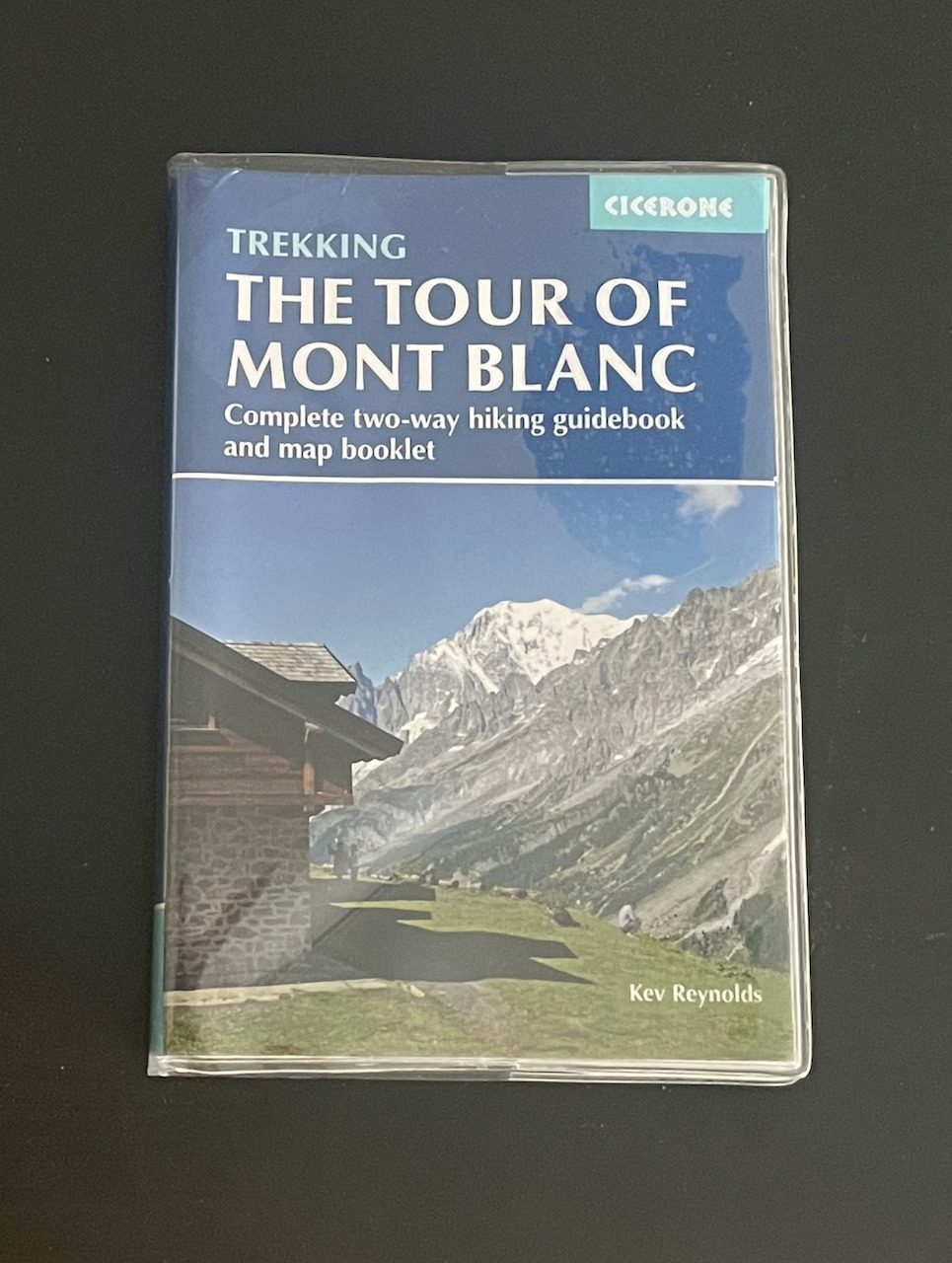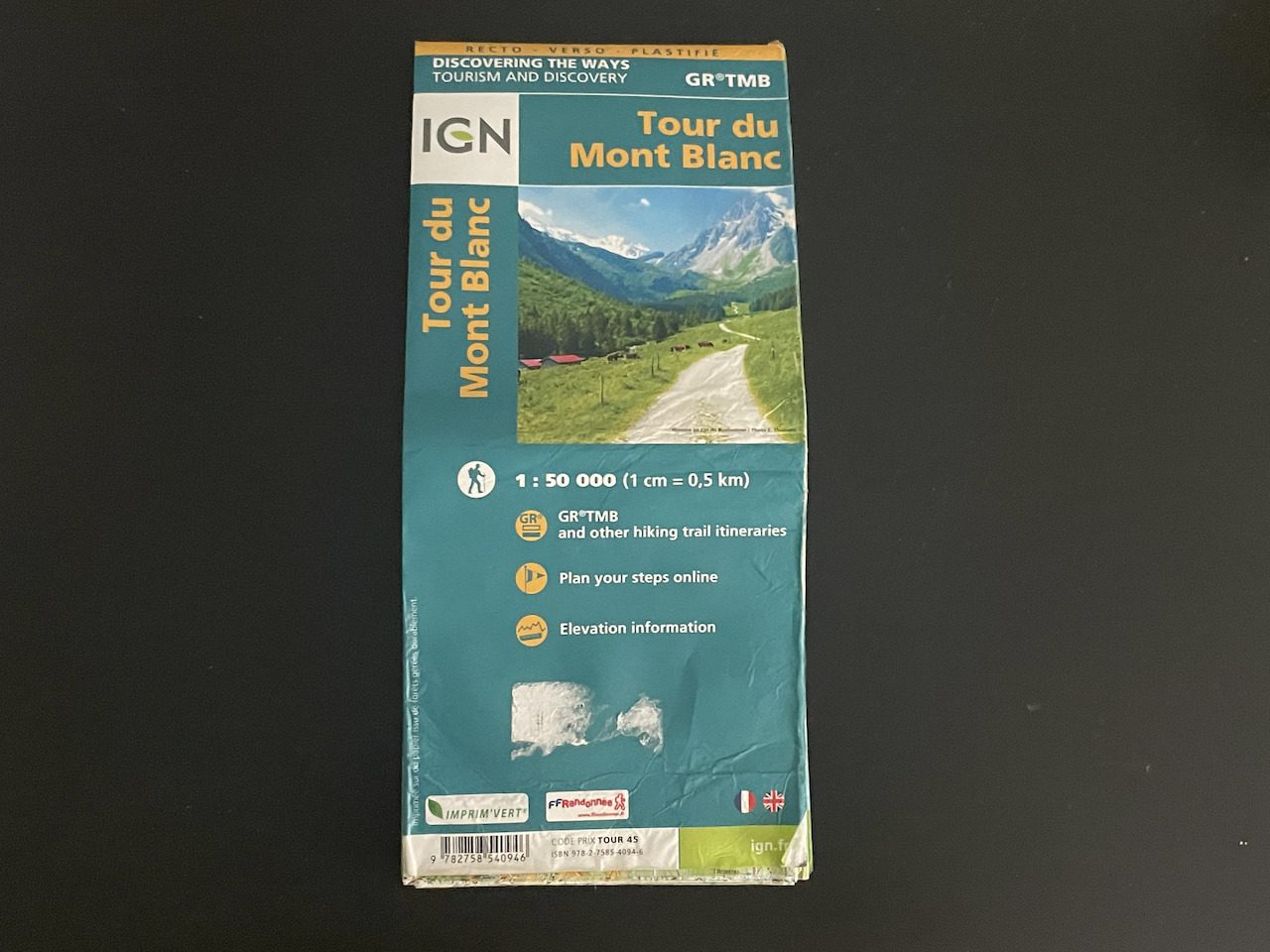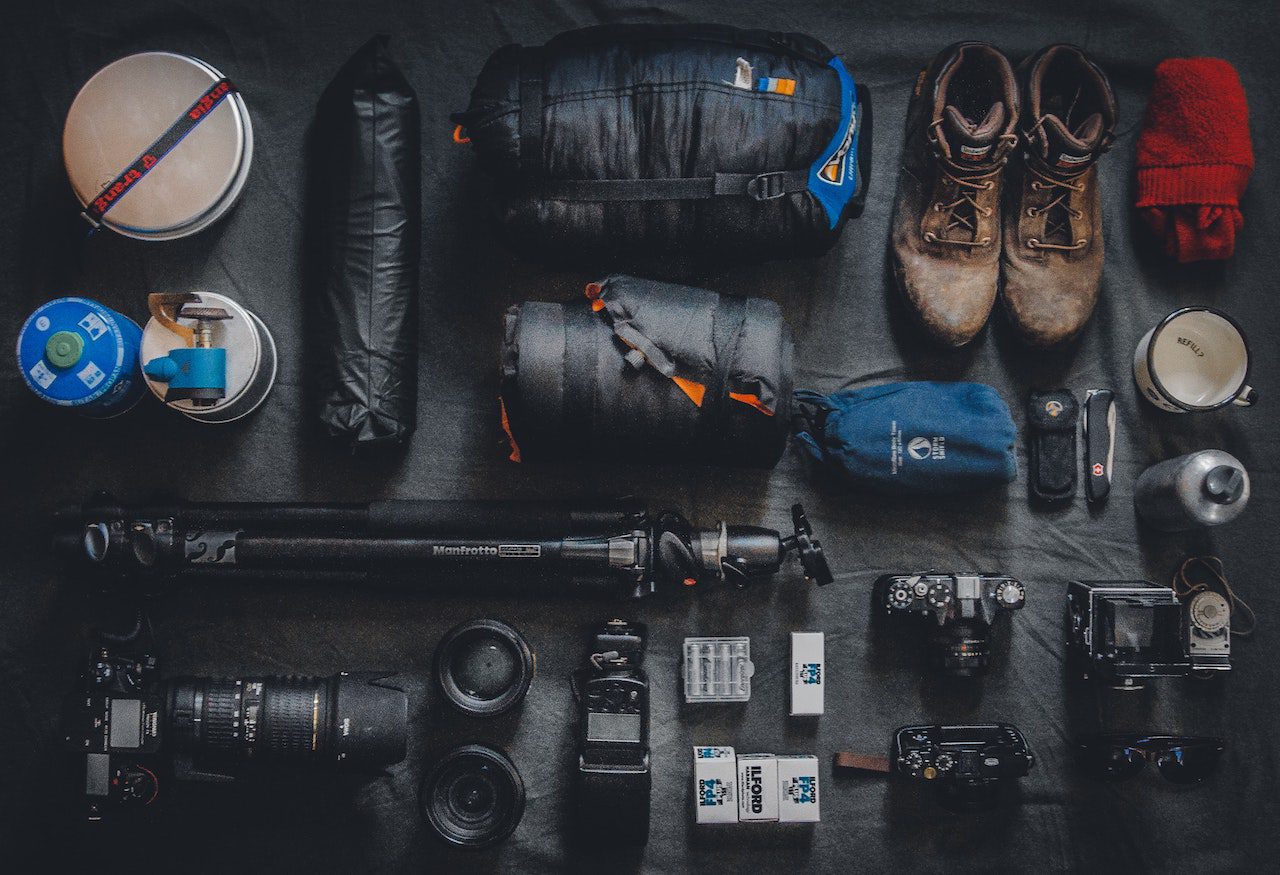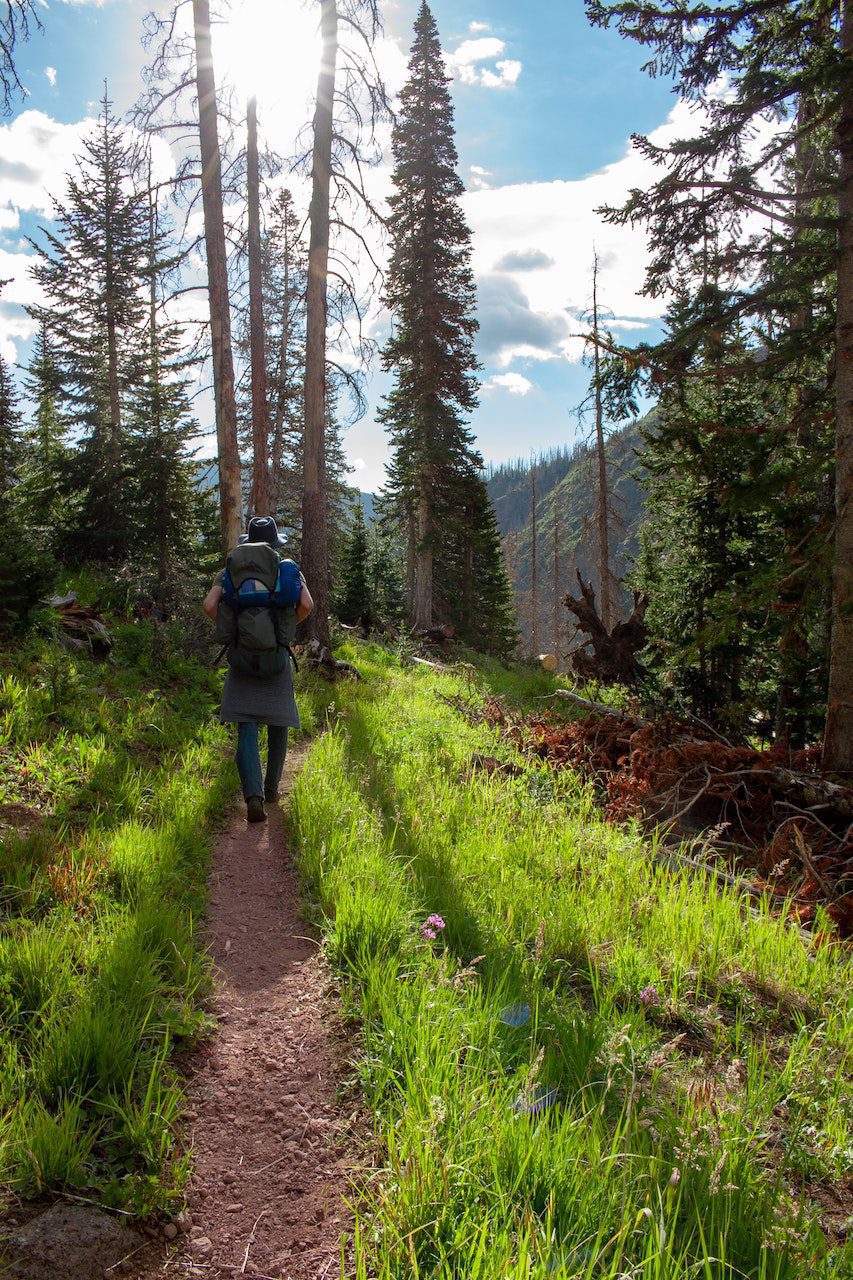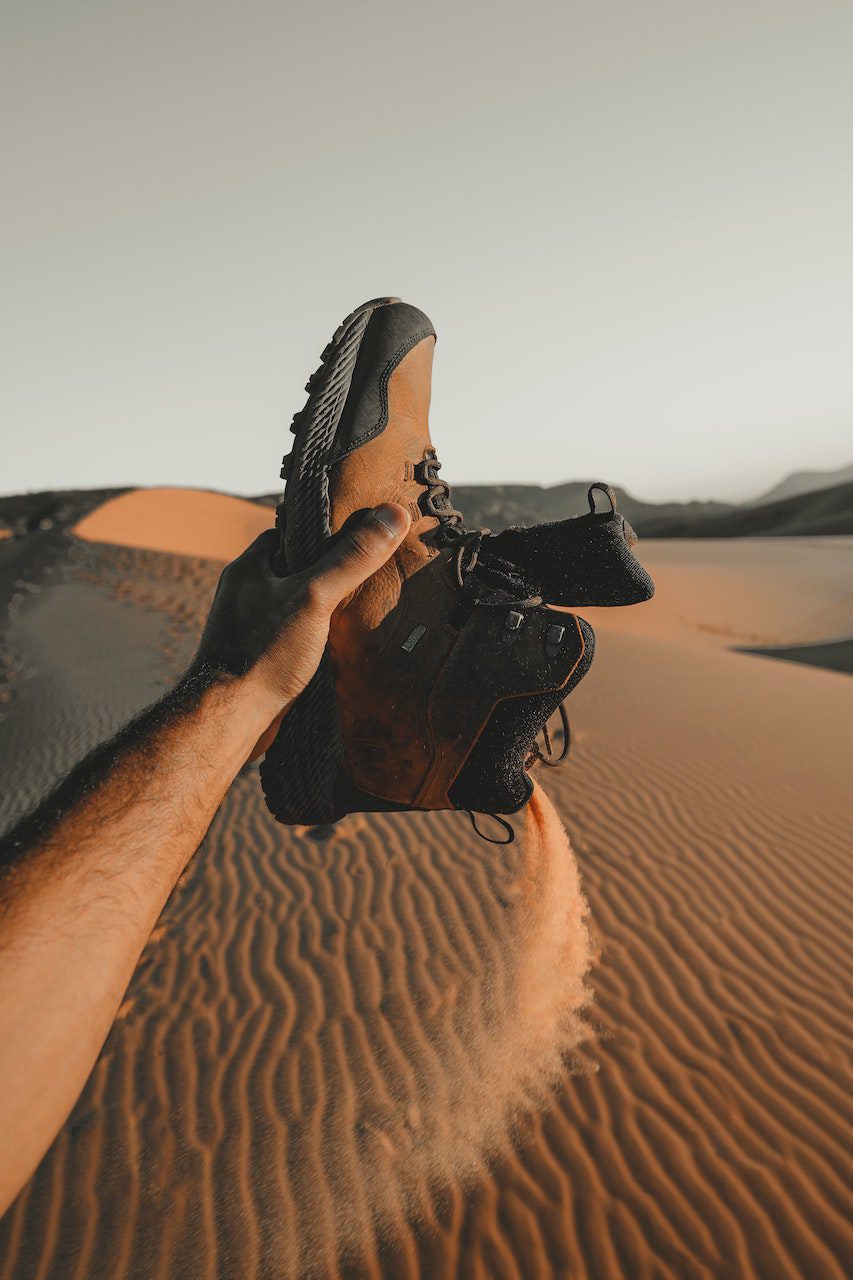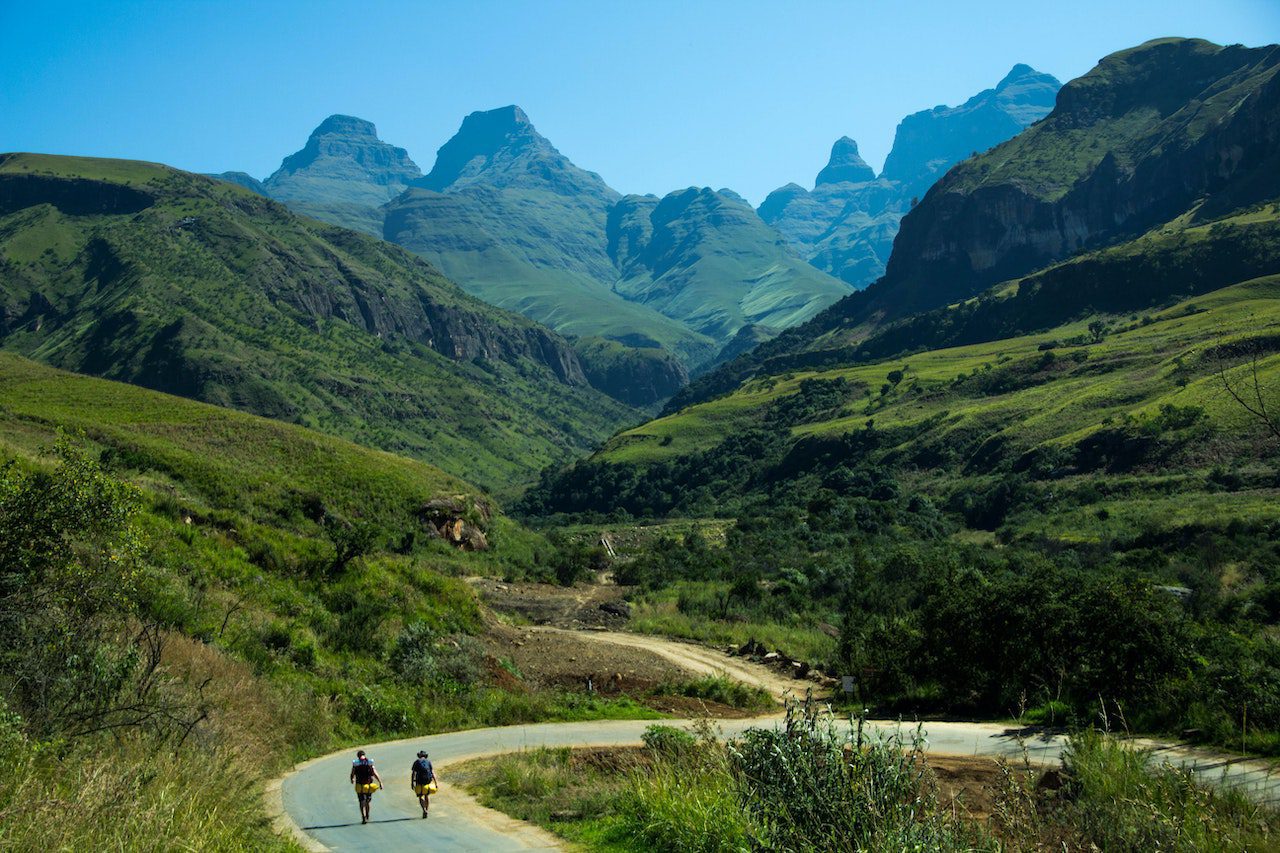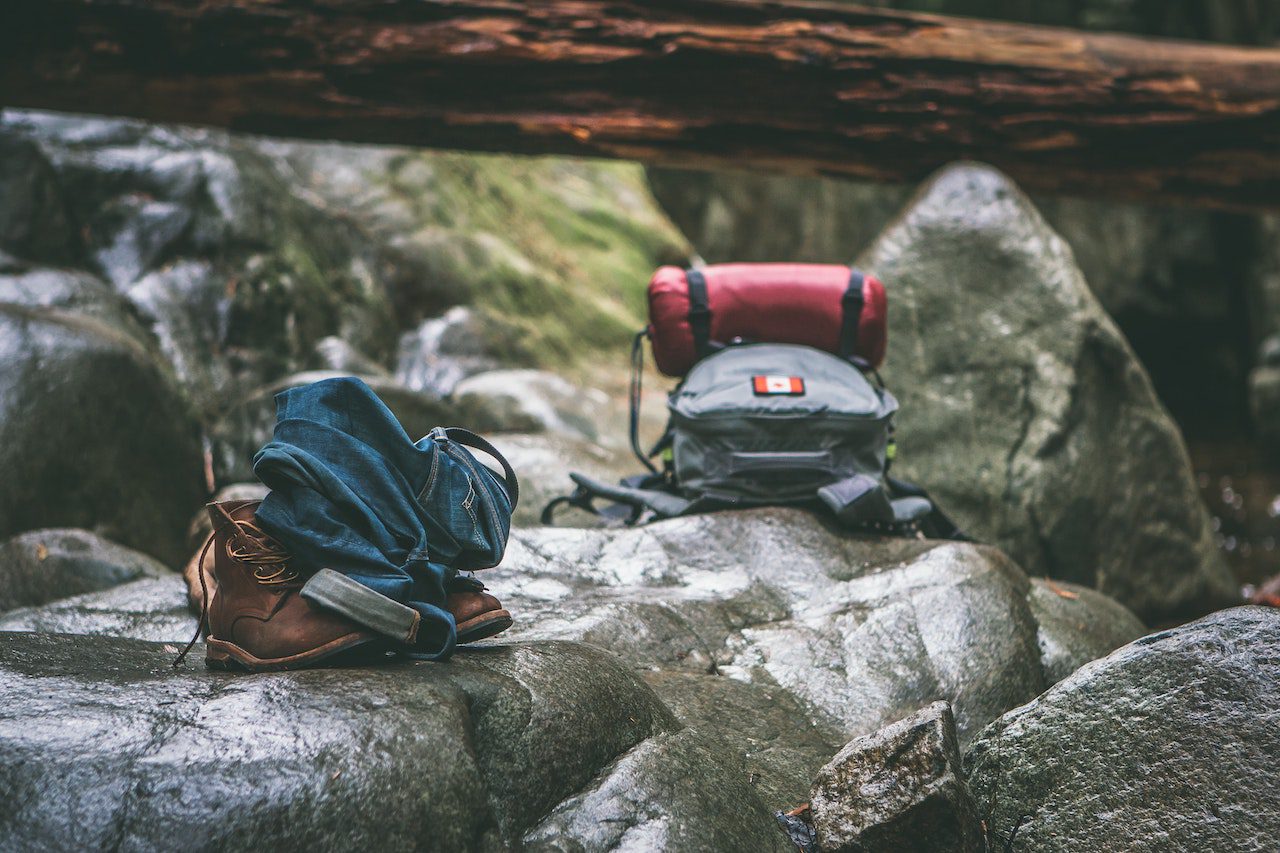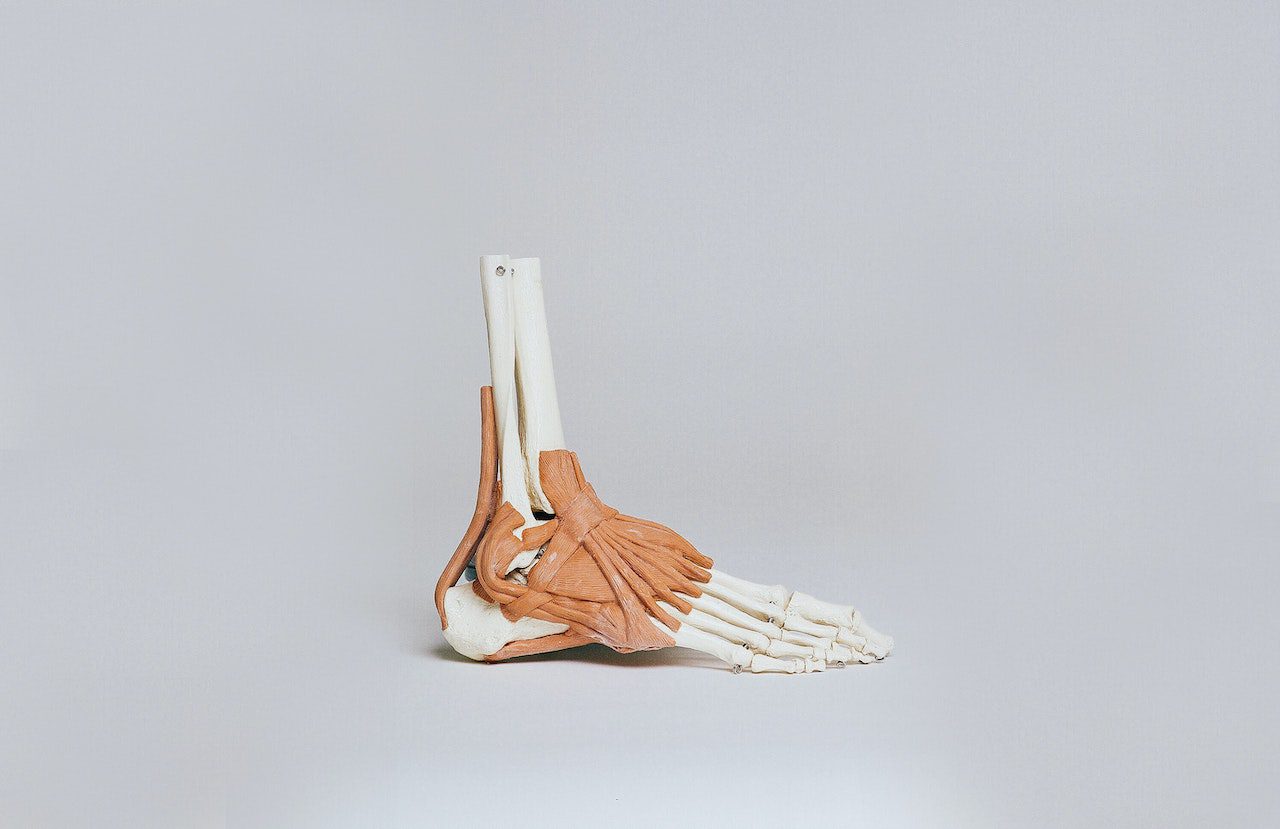
Table of Contents
What Is The Tour Du Mont Blanc (TMB)?
The Tour Du Mont Blanc is one of the most prolific and popular treks in Europe. Encircling the incredible Mont Blanc massif, the Tour Du Mont Blanc consists of 105 miles of well-marked trail through France, Italy, and Switzerland.
During this trek, you will conquer fourteen mountain passes while hiking through a wide variety of natural and cultural environments. The TMB not only offers incredible views of the alps from each of these countries but also allows you to experience the traditional culture of each of these rural regions as you hike through farmland, flocks of domesticated animals, and small hamlets.
Although it is not the conventional backpacking trip with its many mountain huts to stay at along the trail, the Tour Du Mont Blanc offers you the unique opportunity to enjoy both the natural and cultural beauty of Europe.
Throughout this guide, we will discuss how to hike the Tour Du Mont Blanc, a sample TMB itinerary, as well as the gear needed for your trek.
Disclosure: Bear in mind that some of the links on this page are affiliate links, and if you go through them to make a purchase, I will earn a commission. Using these links does not affect the cost of the product, but it does help our small business continue to run and provide quality content.
Trek Specs:
- Distance: 105 miles / 170 kilometers
- Route Type: Loop
- Classic Starting Point: Les Houches
- Classic Direction: Counter-Clockwise (anti-clockwise)
- Total Elevation Gain/Loss: 33,632ft / 10,251 meters
- Days To Hike: 7-11 days
- Countries: France, Italy, Switzerland
Best Time To Hike The TMB?
The regular season for hiking the TMB runs from the end of June to early September. I personally hiked the TMB in September which was great for avoiding crowds but hut closures were much more prevalent as it is towards the end of the season.
How To Plan And Prepare To Hike The Tour Du Mont Blanc?
With such a long trek there are a ton of things that go into planning and preparing your Tour Du Mont Blanc hike. The below is a great overview of how to prepare for the hike, from planning your stages to booking mountain huts and everything in between
Get In Shape:
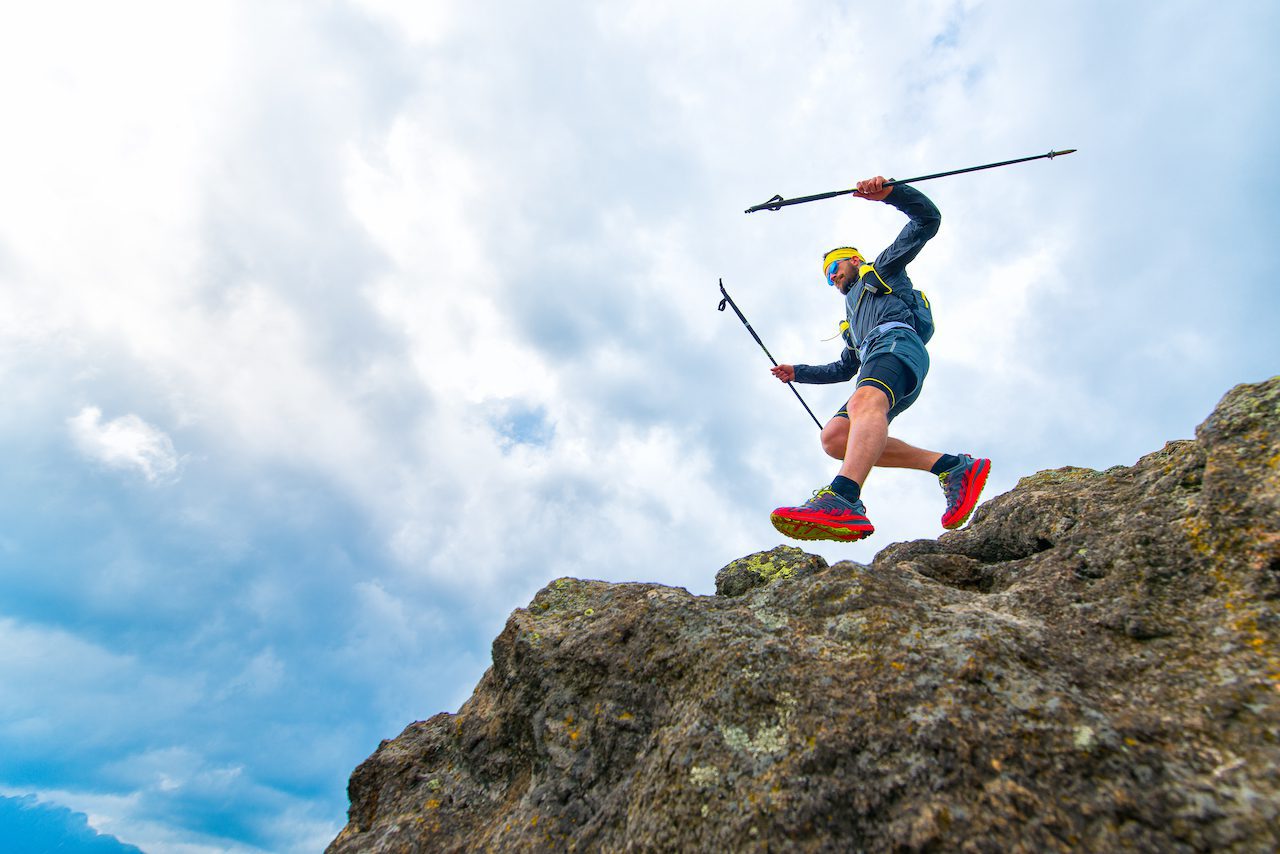
The fact of the matter is the TMB is a strenuous long-distance hike, and you need to be prepared for day after day 1,500+ feet of elevation gain for the entirety of the 105-mile loop.
Before undertaking this hike, you must be in excellent trekking shape and should consider going on several smaller-scale backpacking trips to help build up to this adventure.
Some ways to improve your endurance can include any form of aerobic exercise, including running, walking, or hiking. Feel free to check out our article for more ways to improve your hiking endurance. You do not want to take any half measures and show up to this trek unprepared for the mileage and elevation gain.
TMB Trip Planning Resources:
If you want to hike the Tour Du Mont Blanc, here are two resources I highly recommend for planning and bringing with you during your trek.
- Trekking The Tour Of Mont Blanc by Kev Reynolds: This is an incredibly helpful resource giving insights into the trek that can only be obtained by many years of hiking it. The book also provides many helpful map and elevation profile images, which helps tease out how exactly how many miles and elevations you will be covering each day.
- The Tour Du Mont Blanc Map: This map shows the entire route with many refuges and campgrounds depicted. Like every backpacking trip, you need a good map..
Where To Stay When Hiking The Tour Du Mont Blanc: Camping Vs Mountain Huts
The next thing you decide is whether you plan on camping for your Tour Du Mont Blanc or if you will be staying at mountain huts the entire way. Both have their benefits and drawbacks, but it is important for you to research which option best aligns with your ideal TMB journey.
Mountain Huts On The TMB:
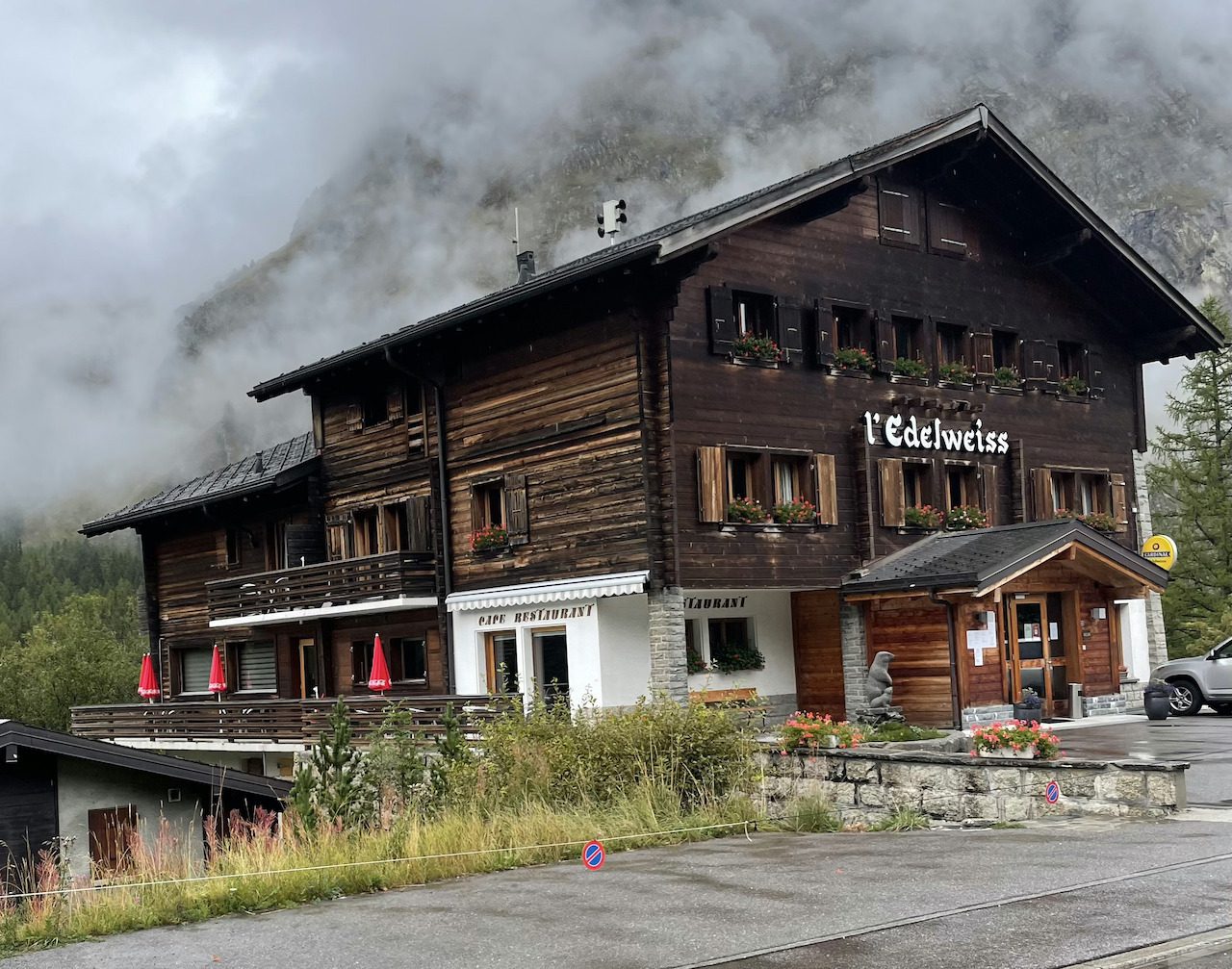
What Are Mountain Huts On The TMB?
Mountain huts are a form of hiking hostel found on the Tour Du Mont Blanc trail that is also commonly referred to as refuges or gites. These refuges are located throughout the TMB, making it extremely easy to personalize your itinerary. Huts often vary in quality and accommodations you can have anything from dormitory-style stays to your own private room. Huts also provide meals during your stay and for an additional fee willnpack a lunch for your next day of hiking.
Why Staying At Mountain Huts On The TMB Is Awesome:
There are so many benefits to staying at mountain huts when hiking the Tour Du Mont Blanc, including:
- Meals! You no longer have to worry about where your next meal is coming from. Refuges often provide breakfast and dinner while giving an option to pack a lunch for you for a fee.
- Shelter: Staying at refuges or gites gives you a shelter that you don’t have to carry on your back, allowing you to sleep more comfortably and pack ultralight.
- There are many of them: Because there are so many refuges distributed throughout the trek, you have flexibility in self-planning your trip.
- Meet other hikers: The great thing about mountain huts is the hiking community that flocks to them. When I hiked the Tour Du Mont Blanc solo, I met so many amazing people from the family-style meals served at each hostel which eventually turned into hiking buddies!
- Experience a different culture: Because the huts are located in rural parts of each of the three TMB countries, they offer a unique opportunity to experience the traditional rural culture of these regions.
Mountain Hut Cons:
- Price: There is no question that staying at mountain huts are fare more expensive than camping the TMB. Especially if you are staying at high quality huts and have all your meals included it is possible to run up an expensive vacation bill.
- Quality varies: While there are plenty of huts along the TMB the quality among them can vary greatly both on the lodging and meals end of things. It is important to do your due diligence when booking hostels to make sure they are up to your expectations.
Mountain Hut Etiquette On The TMB:
- Remove your hiking boots before entering the hut and put on your clean camp shoes.
- Check-in with your host, pay and specify what meals you will be partaking in and your dietary restrictions if any.
- Bring a sleeping bag cover to sleep in when staying at a hut will help protect you from any bed bugs.
- Bring a headlamp especially for dimly lit dormitories.
Camping On The TMB:
While you can camp when hiking the Tour Du Mont Blanc, it is essential to thoroughly plan what sites you will be staying at as well as regions where you are allowed to camp offsite. The map and guide book recommended above will depict areas where you can camp.
While camping is fun and cheaper, I think you miss out on a lot of the cultural experience that comes with staying at mountain huts. Also, this leaves you with considerably more weight to lug around during your hike.
How To Plan Food Resupply On The TMB:
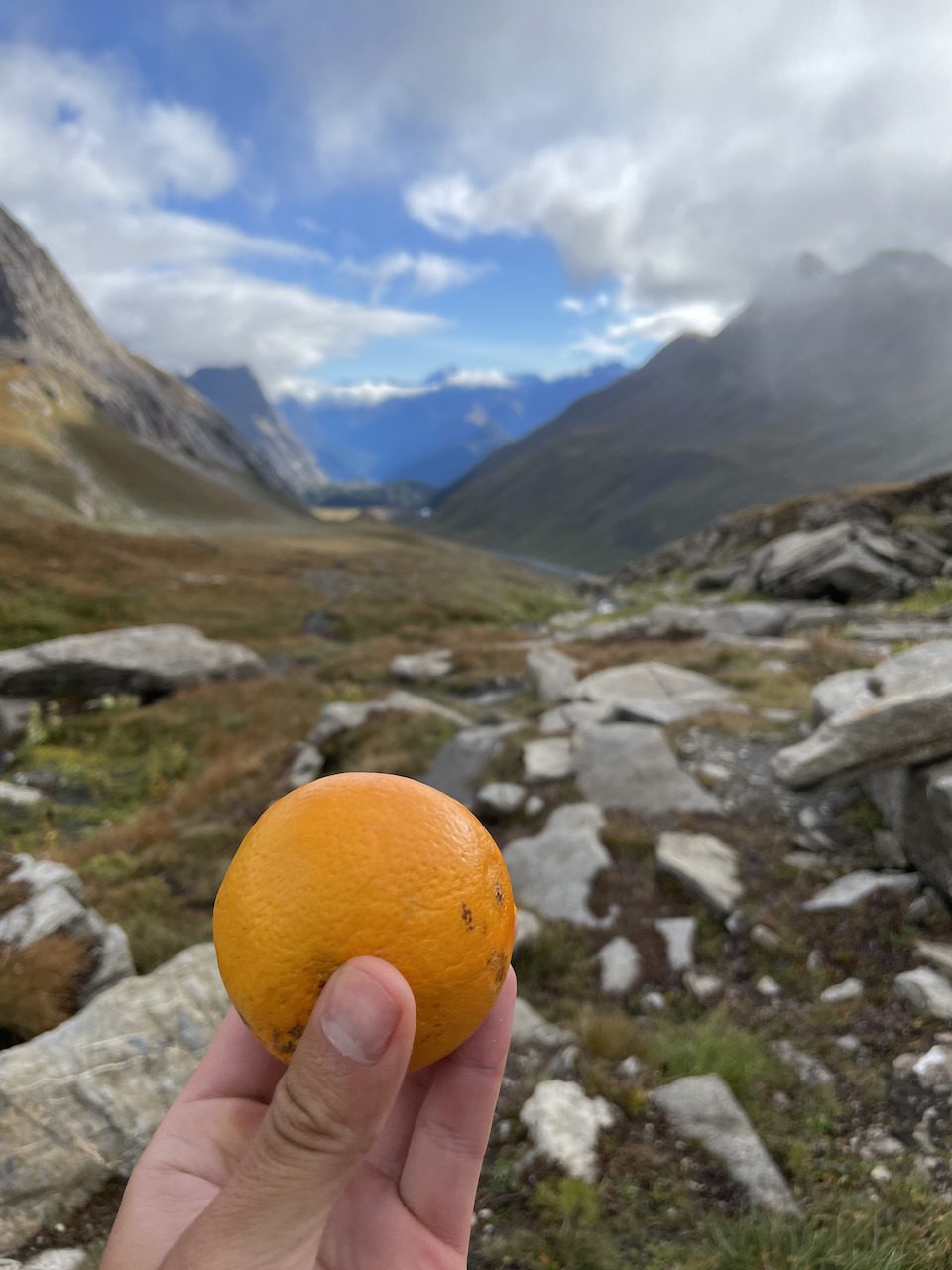
Since the TMB passes through many small villages and hamlets there is easy easy access to food, making food resupply is a breeze. However, your food resupply strategy will vary depending on how you plan on hiking the TMB, whether it be by camping it or staying at refuges.
Food Resupply When Staying At Mountain Huts:
While staying at mountain huts, food resupply cannot be any easier. While it may require spending a bit more money, you can get breakfast, lunch, and dinner through most mountain huts taking all the stress out of planning your meals. Just be sure to request these meals when making your reservations and notify your host of any food allergies you may have.
Food Resupply When Camping:
If you decide on camping your way along the TMB, your food resupply strategy will require a bit more thought than staying at refuges but is still doable. What I recommend is that when you arrive in town at the end of a day of hiking, stock up on that day’s dinner and the next day’s breakfast and lunch. This will help you stay refueled and save precious pack weight for which your knees will thank you.
What Gear Do You Need To Hike The Tour Du Mont Blanc?
As with any hike you need to have the right gear to comfortably enjoy the hike. The gear needed to hike the Tour Du Mont Blanc varies depending on how you want to hike it. Below are our two gear guides.
- The Ultimate Backpacking Gear Blog: should be used if you plan on camping during your trek.
- The TMB Ultralight Gear Guide: should be used if you want to hike ultralight and plan to stay exclusively at mountain huts.
Remember Bring Cash On Your Trek:
Many of the mountain huts require cash payment for their meals or for the stay itself. So it essential to have cash with you during your trek and the right currency as well. France and Italy accept the Euro, however, while in Switzerland you will need to have Francs with you as some businesses will not accept euros.
How To Navigate The Tour Du Mont Blanc:
Fortunately, the TMB is an extremely well-marked trek with signage and trail markings diffusely placed throughout the trail. However, despite this excelling signage, it is still important you carry a map and compass and know how to use them. GPS guidance can also be helpful but be sure you download an accurate GPx file for your particular route.
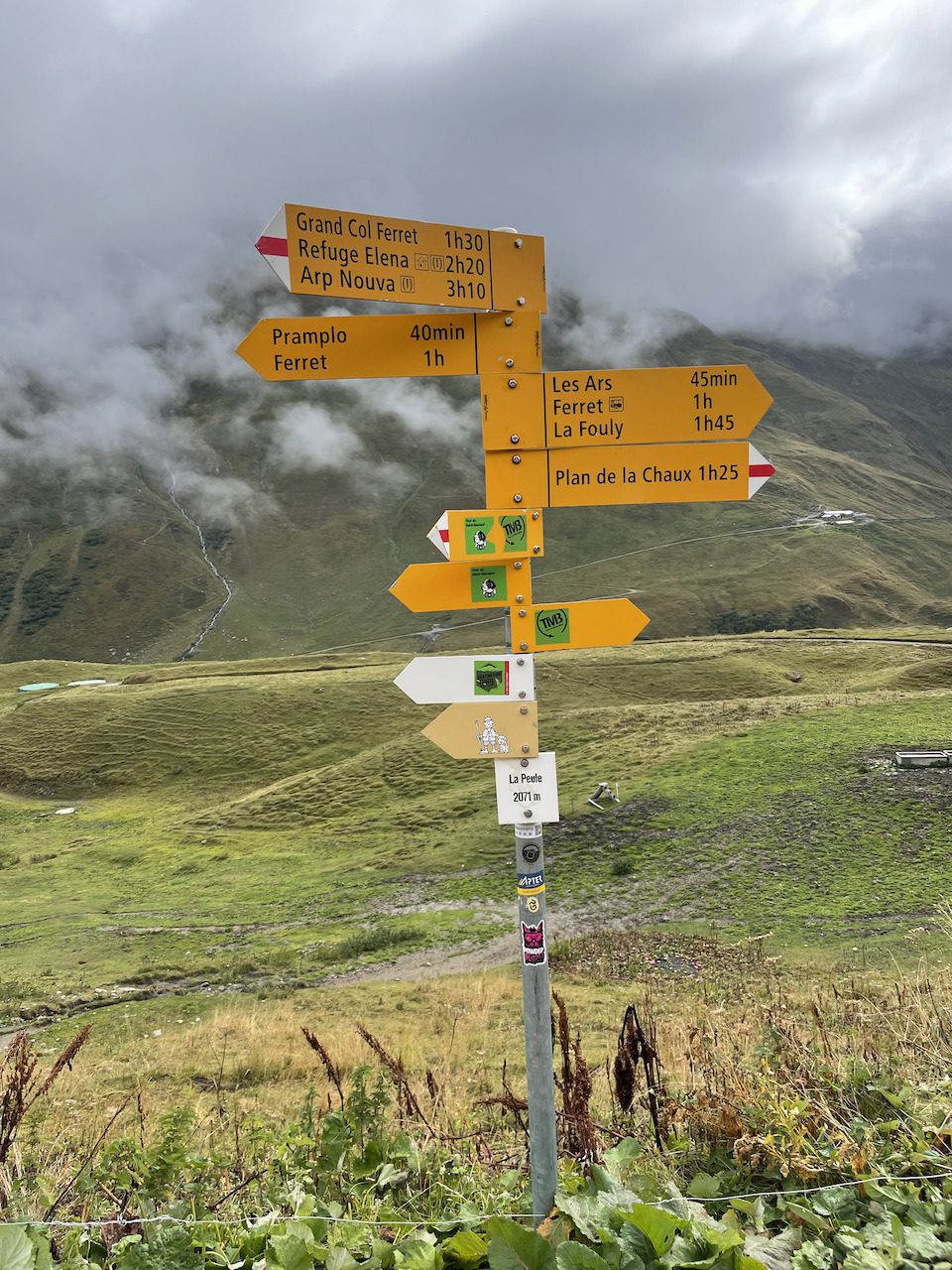
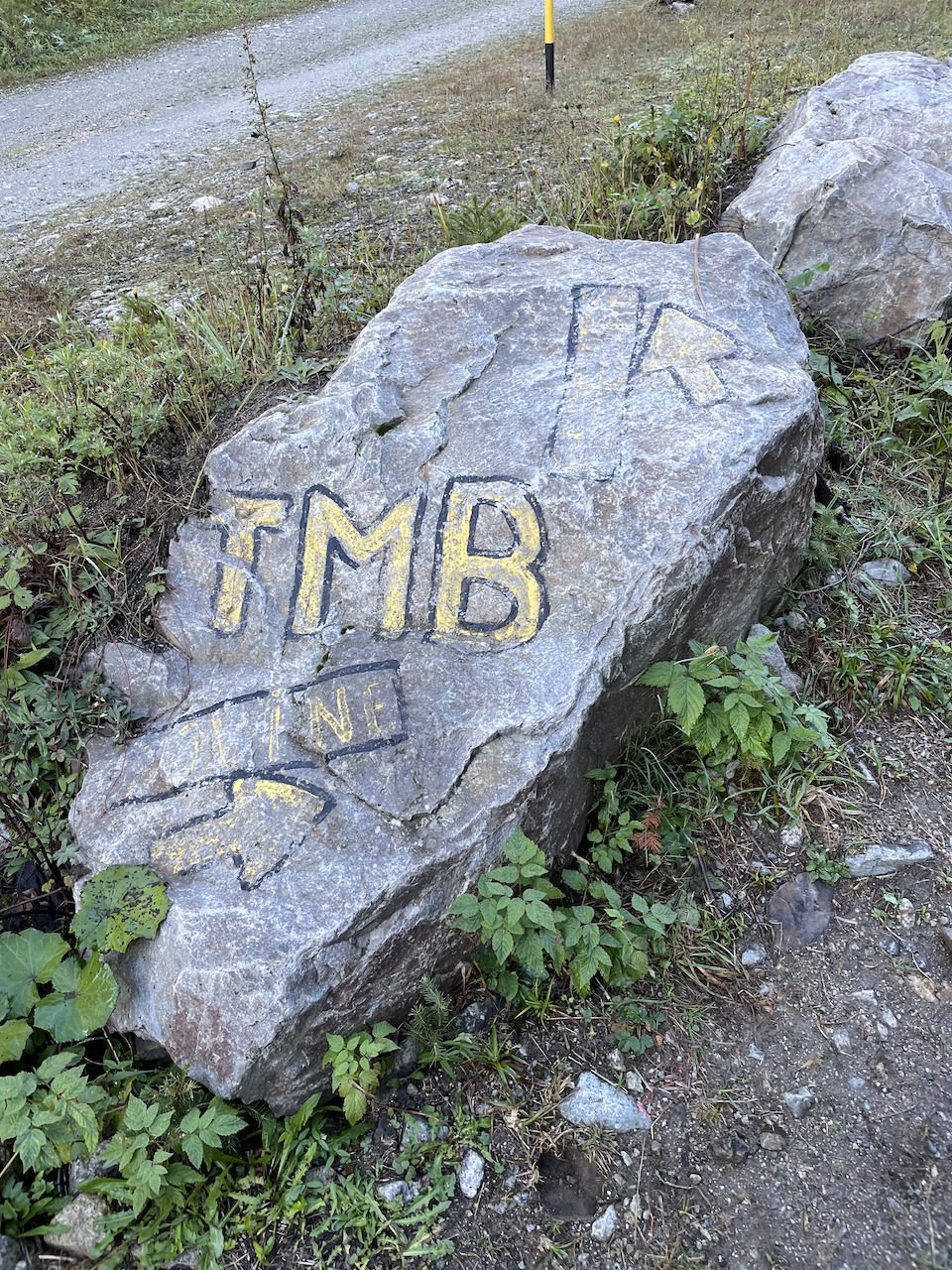
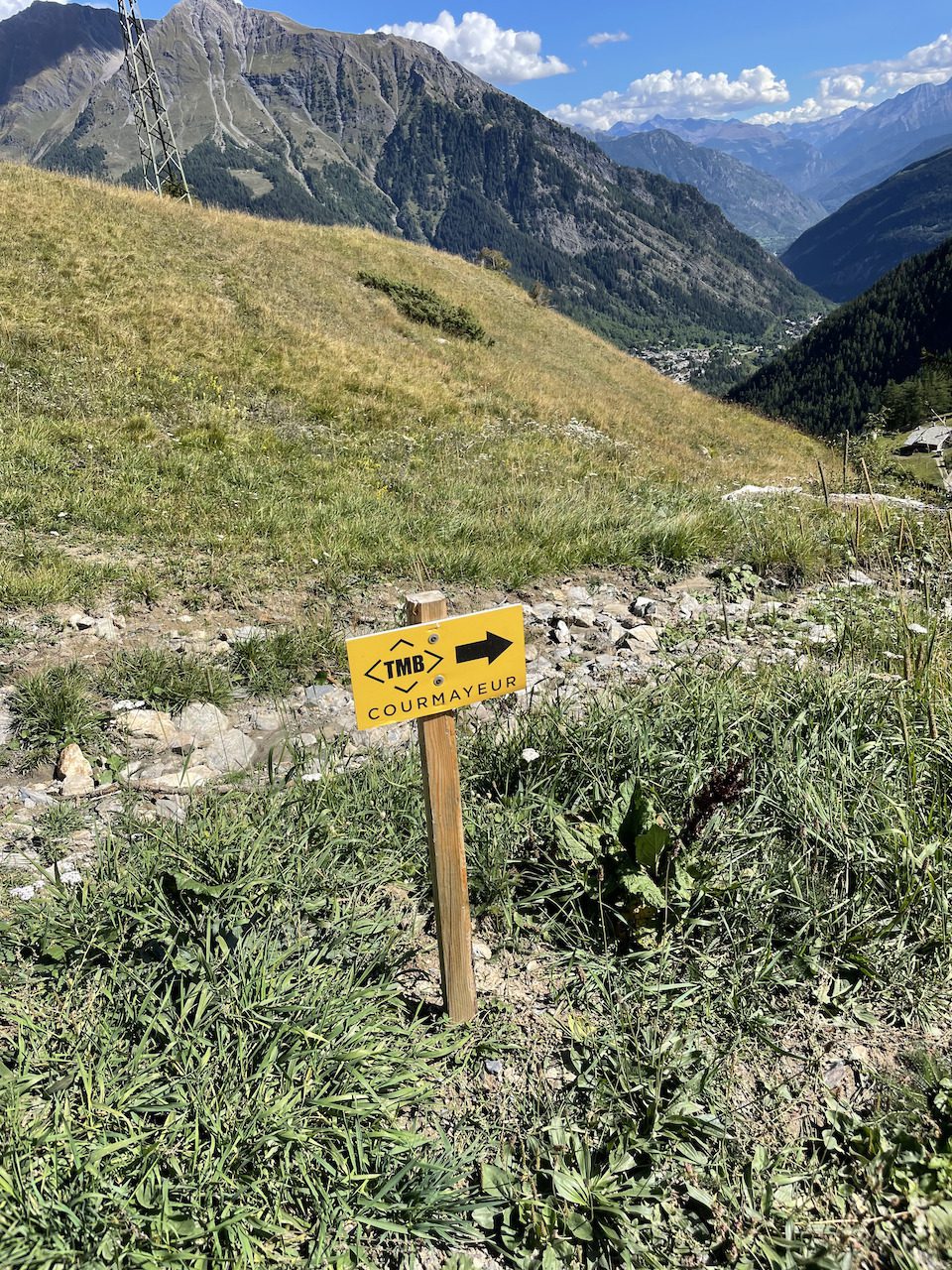
Planning Your Tour Du Mont Blanc Hike: Hire A Company Vs DIY
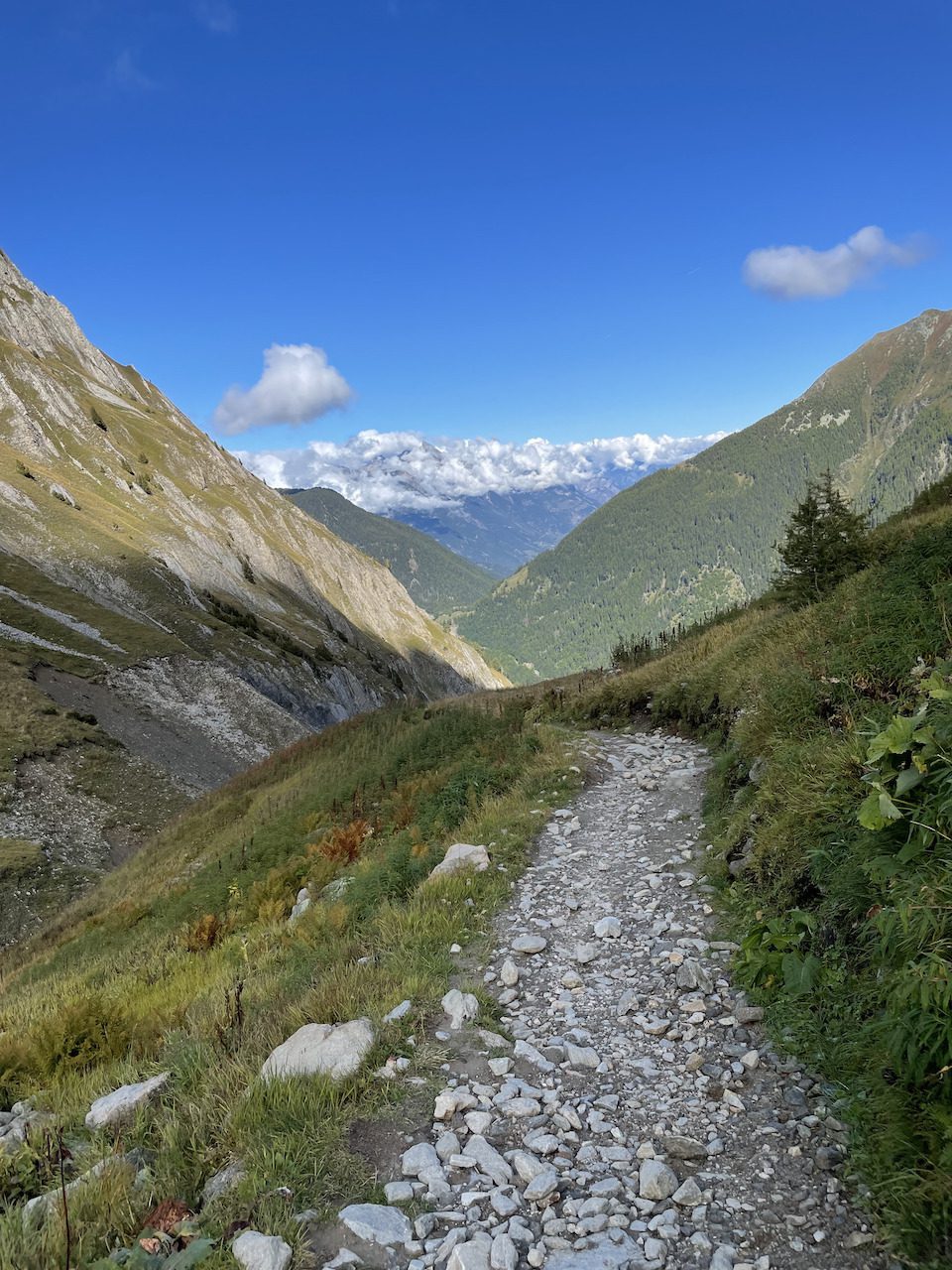
A big decision you will have to make is whether you want to hire a company to plan your trek or if you plan it yourself. While both have their merits I strongly prefer the self-planned option as it is incredibly cheaper and offers more flexibility when planning your trip. However we will go through both options to help you decide the best one for you!
Hiking The TMB Through A Tour Company:
There are several different companies you can go with if you want to go the route of hiring an agency to plan your trip. These paid options offer both guided and self-guided tours of the trek.
Guided TMB Treks:
During guided treks, you will typically have an experienced guide with you for the entirety of the trek. Some of the benefits of opting for a guided TMB trek are:
- Navigational Assistance: Having a guide can be beneficial for those of you with less backpacking experience and who are afraid of getting lost during the trek.
- Informational: Guided treks offer you insights about the trail and the waypoints you pass during your journey.
- Mountain Hut Planning: Guided tours will also handle all of your hut bookings for your trek.
Self-Guided TMB Treks:
Self-guided TMB tours essentially involve having the tour company handling all of your hut bookings then you handling the rest of your hike solo. While this is nice for those looking to avoid the logistical headaches that come with planning all of your hut stays, it can be considerably more money for just having someone else make hotel bookings for you.
Guided Vs Self-Guided TMB Treks:
If you are set on paying a company for booking your TMB trek I recommend paying the extra money for a guided trek as opposed to the self guided option. The reason is that you will benefit from an experienced guide handling all of the route finding, pack organization, and offering their wealth of knowledge to inform you on the beautiful environments you will be hiking through.
The problem I have with self-guided options is that they still cost a lot of money, and all the company is doing for you is making mountain hut reservations!
If you are interested in having a company book your trip below are some popular companies that offer both guided and self-guided Tour Du Mont Blanc packages:
DIY Plan Your Own Tour Du Mont Blanc Hike:
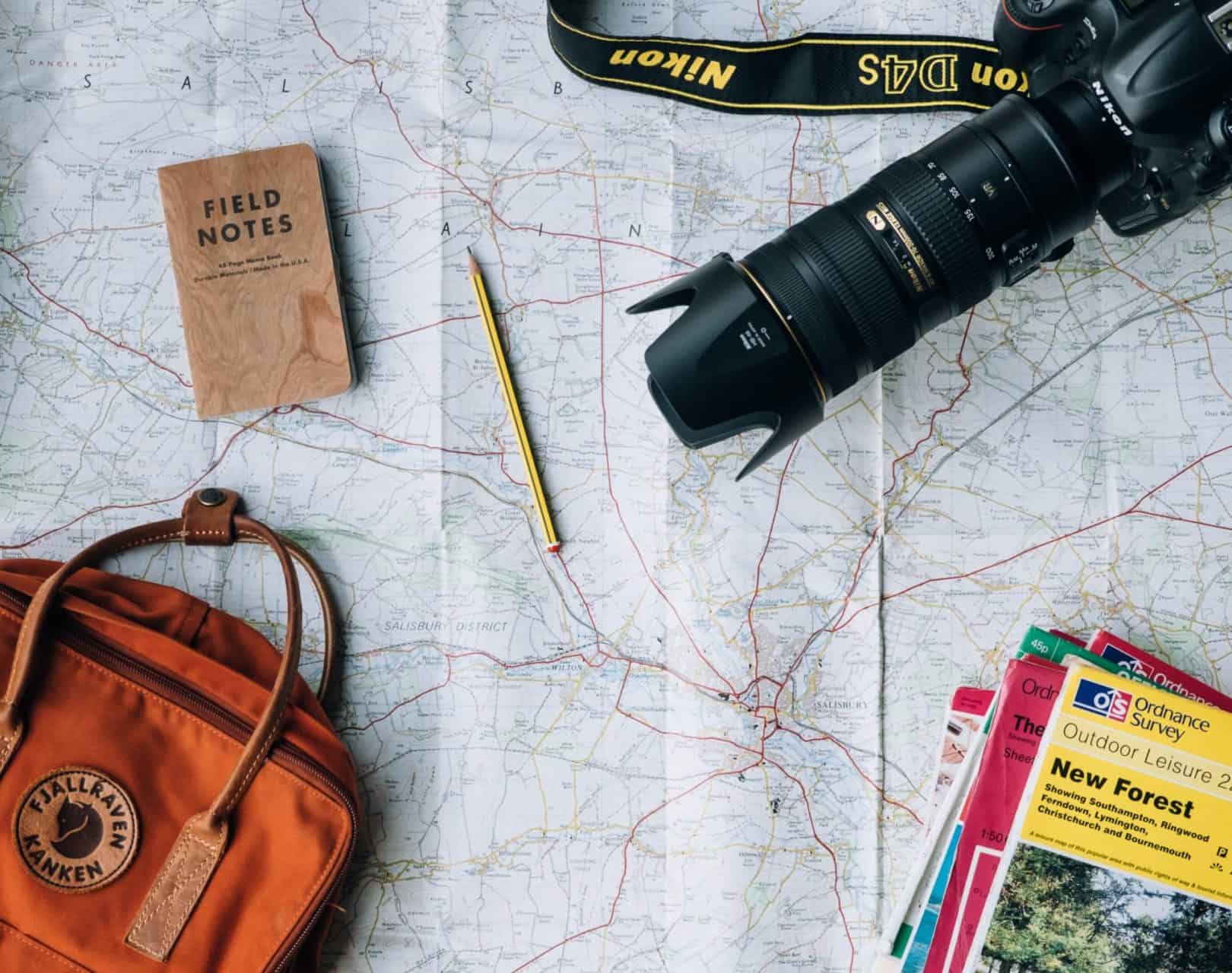
I am personally a big fan of planning your hike on your own. While it can be tedious to prepare so many days of hiking and refuge accommodations, making bookings on your own can save you thousands of dollars and allow you to create your dream itinerary.
Also, by planning your hike, you give yourself the freedom to hike at your own pace, whether it be faster or slower than the standard 11-stage circuit. Designing your own tour will also allow you to pursue different route alternatives that may interest you outside the traditional course.
Below we go through the entire traditional Tour Du Mont Blanc itinerary, and from here, you can begin planning your adventure!.
Tour Du Mont Blanc Hiking Itinerary:
The Tour Du Mont Blanc trek is classically divided into different stages, each day being its own stage consisting of leaving one town and entering another along the trail.
Below are the traditional 11 stage Tour Du Mont Blanc itinerary. Although this is the “traditional route,” it does not mean it is the best route for you. It would be best to create an itinerary that suits your hiking speed and budget. Remember, there are plenty of mountain huts throughout the TMB, which gives you flexibility in planning. It is best to use this itinerary as a template rather than law.
Please keep the following in mind when planning your trip:
- There are many alternative route options in the TMB that are not included in this itinerary which are worth looking into.
- Each of the below links for hostels will bring you to Tripadvisor reviews on the specified stay.
- To book mountain huts, use autotourdumontblanc.com if you can’t find your hut there I recommend going directly to the huts website.
Stage #1: Les Houches To Les Contamines
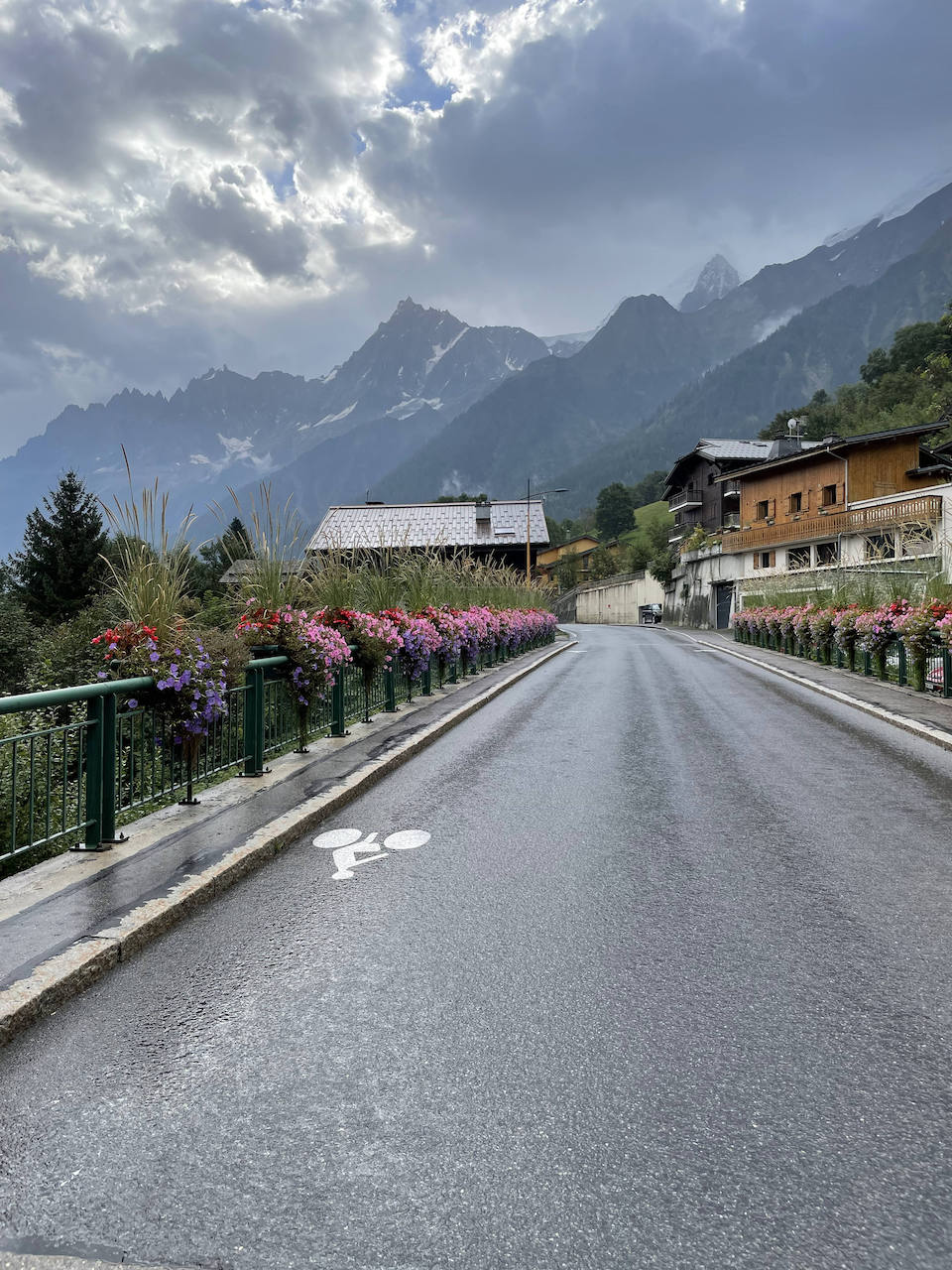
Specs:
- Country: France
- Distance: ~11 miles / ~17.5 km
- Total Elevation Gain: ~3,314ft / ~1010 m
Stage 1 Overview:
The first day of your TMB adventure starts in Les Houches. At the railway station, there is a large green arch that marks the official starting point of the Tour Du Mont Blanc. This stage has a lot of road walking but still offers fantastic views from Col De Voza, including the Dome Du Gouter and Aiguille De Bionassay. The spectacular mountain views and small hamlets you pass during this stage give you a taste of what to expect for your next several days of hiking.
Stays In Stage 1:
Les Houches:
- Chalet Les Meandres
- Gite Michel Fagot
- Chalet des Grands Bois
- Auberg du Montagny
- Hotel la Barme
- Hotel Le Saint Antoine
- Les Chalets du Bonheur
- Residence les Balcons d’Anaite
- Check out more stays in Les Houches!
Les Contamines:
Stage #2: Les Contamines to Les Chapieux
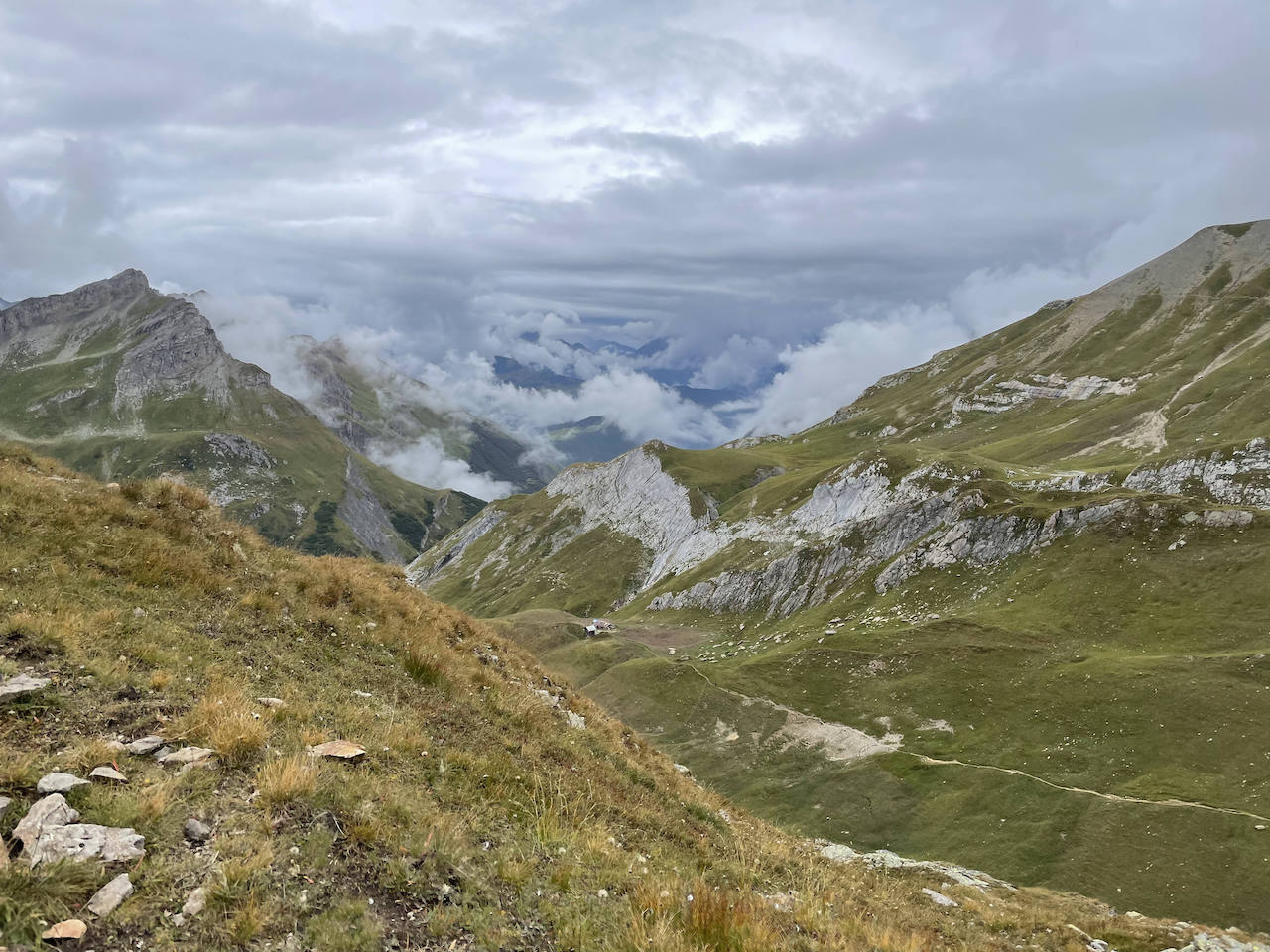
Specs:
- Country: France
- Distance: ~12 miles / ~19 km
- Total Elevation Gain: ~4,462ft / ~1360 m
Stage 2 Overview:
Stage two of the TMB involves climbing to get to the top of Col du Bonhomme. You will pass a historic pilgrimage church Notre-Dame De La Gorge, along the way. When you finally reach the top of Col Du Bonhomme, you will get a peek of the Villee Des Glaciers, which you will pass in stage three.
Stays In Stage 2:
- Refuge du col de la Croix du Bonhomme ~8 km prior to Les Chapieux
- Les Chambres Du Soleil
- Auberge Refuge de la Nova
- Refuge de Mottets ~6 km after les Chapieux
- Refuge Robert Blanc ***This is located on the alternate route***
Stage #3: Les Chapieux To Rifugio Elisabetta
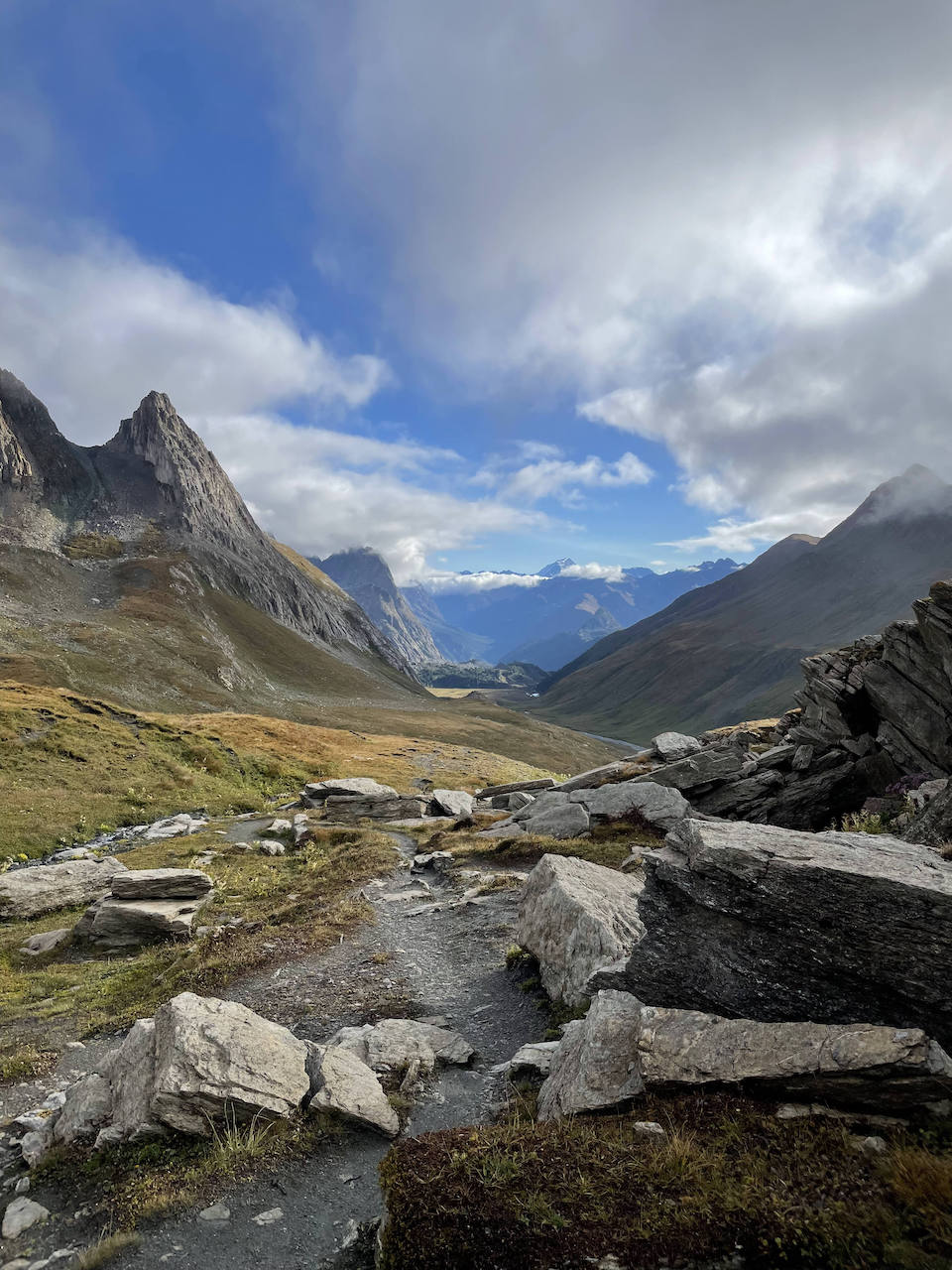
Specs:
- Country: France->Italy
- Distance: ~9 miles / ~14 km
- Total Elevation Gain: ~3,609ft / ~1,100 m
Stage 3 Overview:
At this stage, you will make your first country crossing leaving France and entering Italy after passing the massive rock cairn on the top of Col La Seigne. On a clear day, the top of this col offers one of the best views of the TMB. As you make your way down from this col, you will walk the plains of Lee Blanche up until you reach Val Veni and Rifugio Elisabetta.
Stay in Stage 3:
Stage #4: Rifugio Elisabetta To Courmayeur
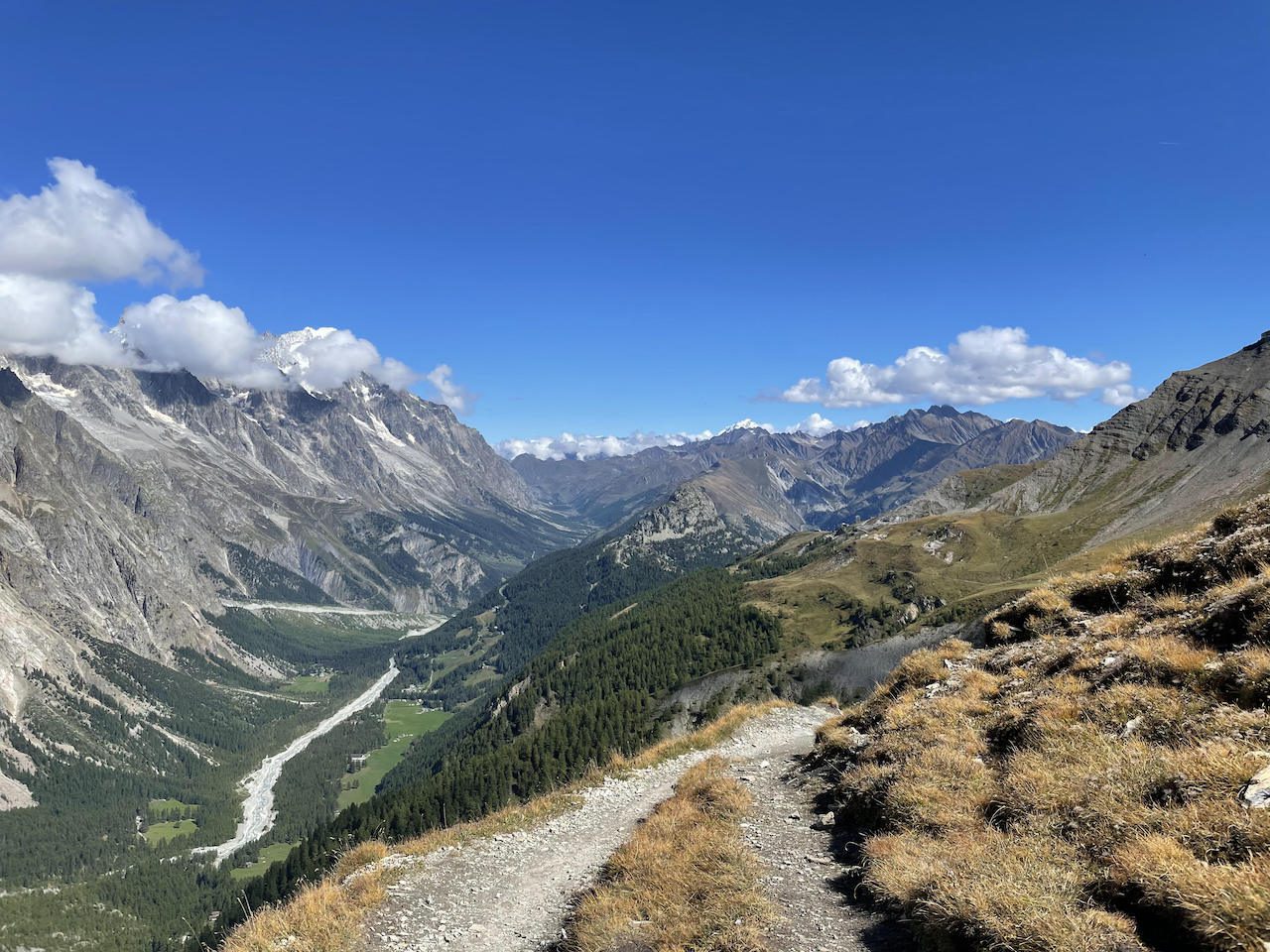
Specs:
- Country: Italy
- Distance: ~10 miles / 15.5 km
- Total Elevation Gain: ~1,903ft / ~580m
Stage 4 Overview:
As You make your way down from Rifugio Elisabetta, you will come across Lac Combal, a lake created by an array of nearby streams. After passing Lac Combal, you will begin to climb to Col Checrouit, getting incredible views of The Val Veni and the southern face of Mont Blanc. Finally, you will arrive at the famous ski town Courmayeur, a common rest stop for TMB trekkers.
Stays In Stage 4:
- Cabane Du Combal
- Rifugio Maison Vielle
- Gite Le Randonneur Du Mont Blanc
- Rifugio Monte Bianco
- Hotel Funivia
- Rifugio Bertone
- Hotel Lavachey
- Hotels in Courmayeur
Stage #5: Courmayeur To Rifugio Bonatti
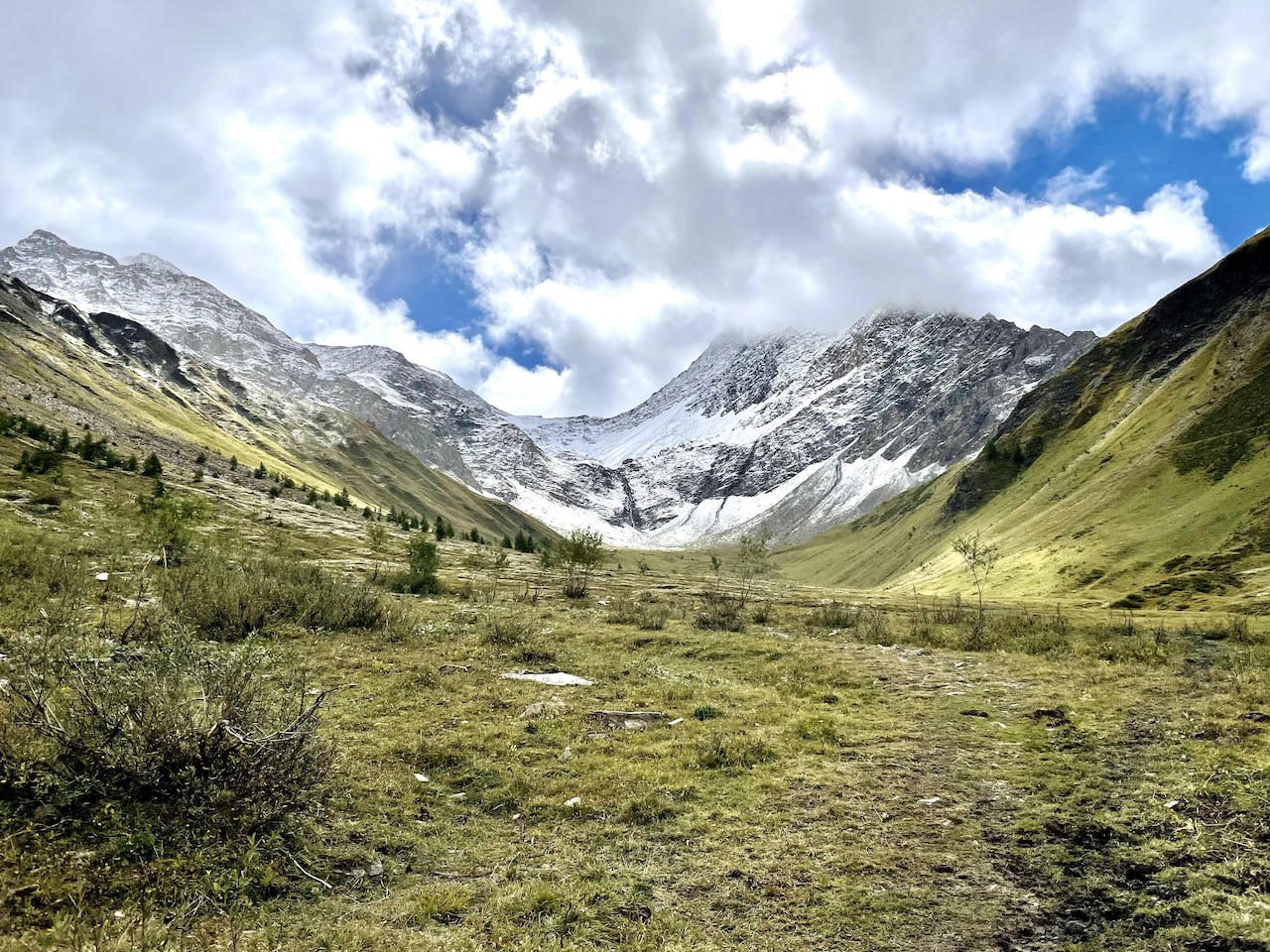
Specs:
- Country: Italy
- Distance: ~7.5 miles / ~12 km
- Total Elevation Gain: ~3,543ft / ~1,080m
Stage 5 Overview:
You have some climbing at the beginning of this stage, but after getting over the initial elevation gain, you will have a rolling trail with incredible views of the Val Ferret (Valley Ferret). Afterward, you will arrive at the famous Rifugio Bonatti, which is on a cliff giving stunning views of the jagged mountains across the Val Ferret. Rifugio Bonatti, named after the famous Mont Blanc Mountaineer Walter Bonatti, is a great refuge and I recommend staying here during your trek if possible.
Stays In Stage 5:
- Rifugio Bonatti
- Hotel Chalet Val Ferret ~6km from Rifugio Bonatti
- Rifugio Elena ~8km from Rifugio Bonatti
Stage #6: Rifugio Bonatti To La Fouly
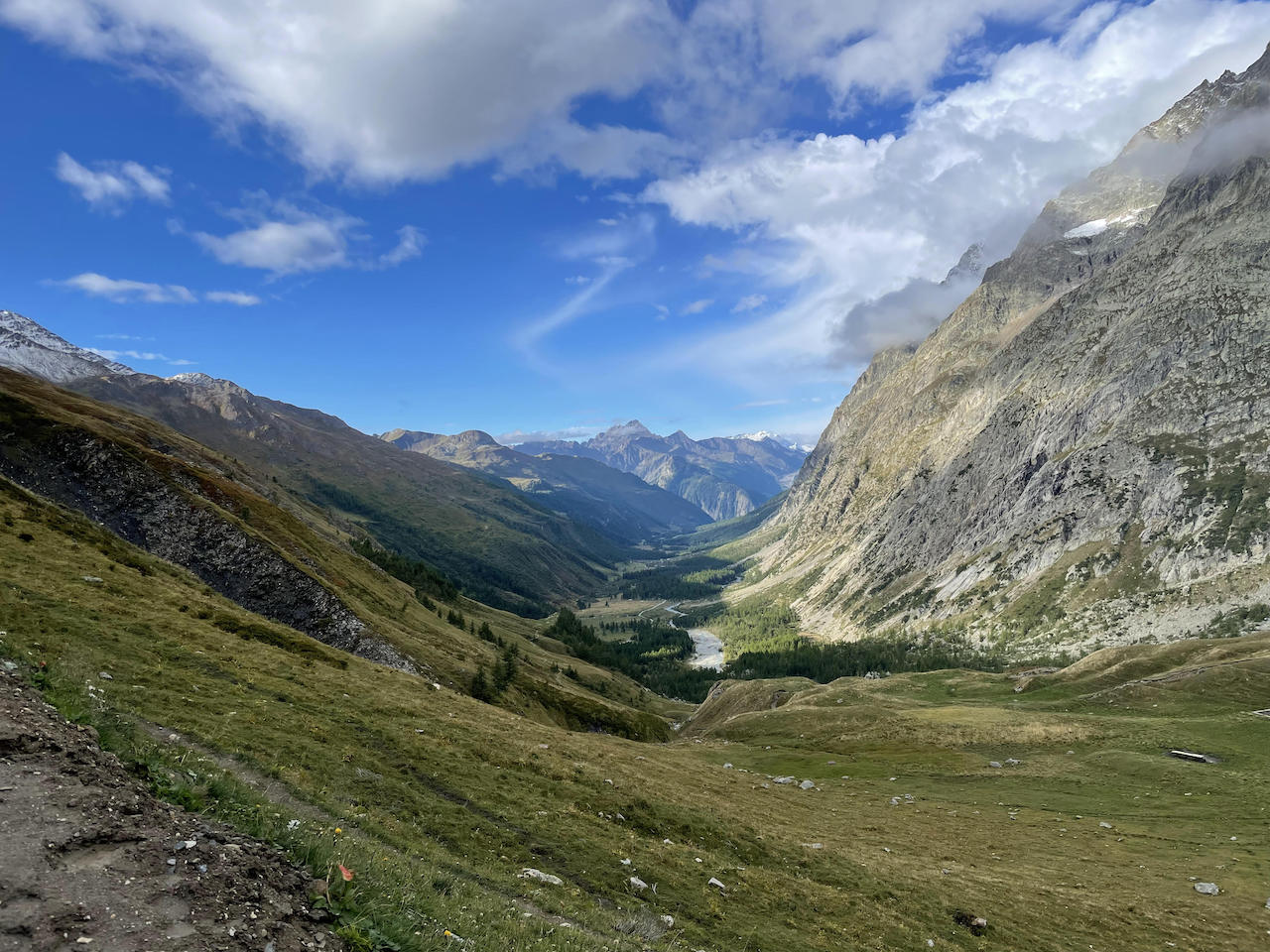
Specs:
- Country: Italy->Switzerland
- Distance: 12.5 miles / 20 km
- Total Elevation Gain: ~3,215ft / ~980m
Stage 6 Overview:
Stage six marks another country crossing. You will descend into the Val Ferret and hike up the valley until you reach Rifugio Elena marking the beginning of your climb of the Grand Col Ferret. It would be best if you took this time to appreciate your final view of Val Ferret when reaching the top of the col. After you cross the Grand Col Ferret, you are officially in Switzerland! The Swiss characteristics of rolling meadows, clanging cowbells, and wooden barns will quickly begin to reveal themselves as you descend into La Fouly.
Stays In Stage 6:
- Gite De La Lechere
- Maya Joie
- Chalet le Dolent
- Gite De La Fouly
- Hotel Edelweiss
- Auberg De Glaciers
Stage #7: La Fouly To Champex
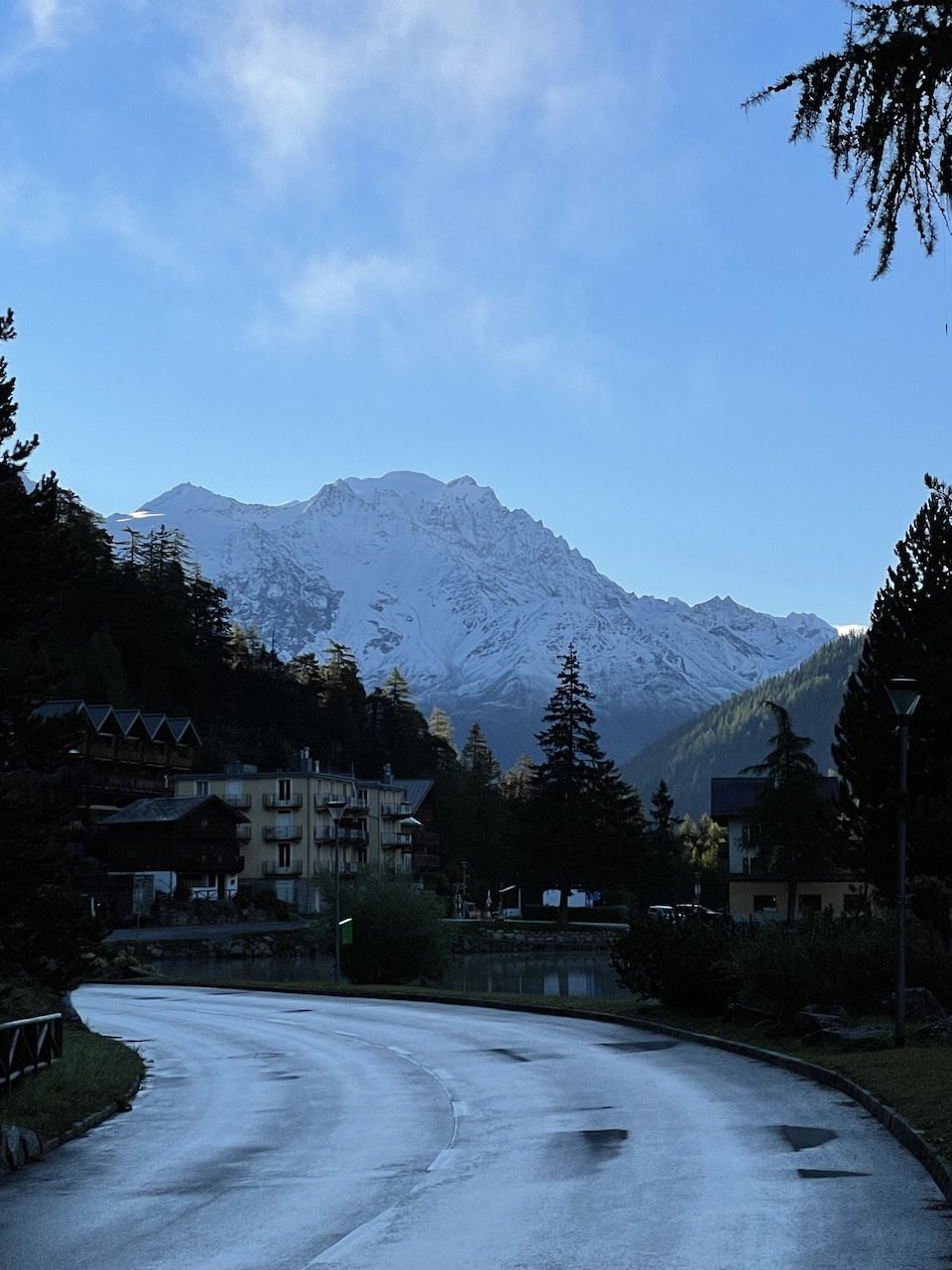
Specs:
- Country: Switzerland
- Distance: ~9.6 miles / ~15.5 km
- Total Elevation Gain: ~1,673ft / ~510m
Stage 7 Overview:
With respect to elevation gain and loss, this may be the easiest stage. You will hike through rural Swiss pastures and farm villages throughout this section. While passing through these small rural hamlets, you have a chance to peer into traditional farm life in Switzerland. You will see wooden balconies of chalets decorated in tulips and geraniums while hearing the ringing of cowbells from domesticated cattle. It’s a rich experience for all of your senses.
After you pass Issert, you will begin your ascent of the Sentier Des Champignons AKA The Mushroom Trail, a forested route where you will see carved statues of mushrooms and various animals. After you come out of this wooded area, you will come out to a small road close to Hotel Belvedere, marking your arrival at Champex.
Stays In Stage 7:
- Pension En Plein Air
- Chalet La Grange
- Auberg Gite Bon Abri
- Relais D’Arpette
- Alpina Champex
- Au Vieux Champex
- Hotel du Glacier
- Hotel le Belvedere
- Hotel Mont Lac
- Hotel Splendide
- Ptarmigan
Stage #8: Champex To Trient
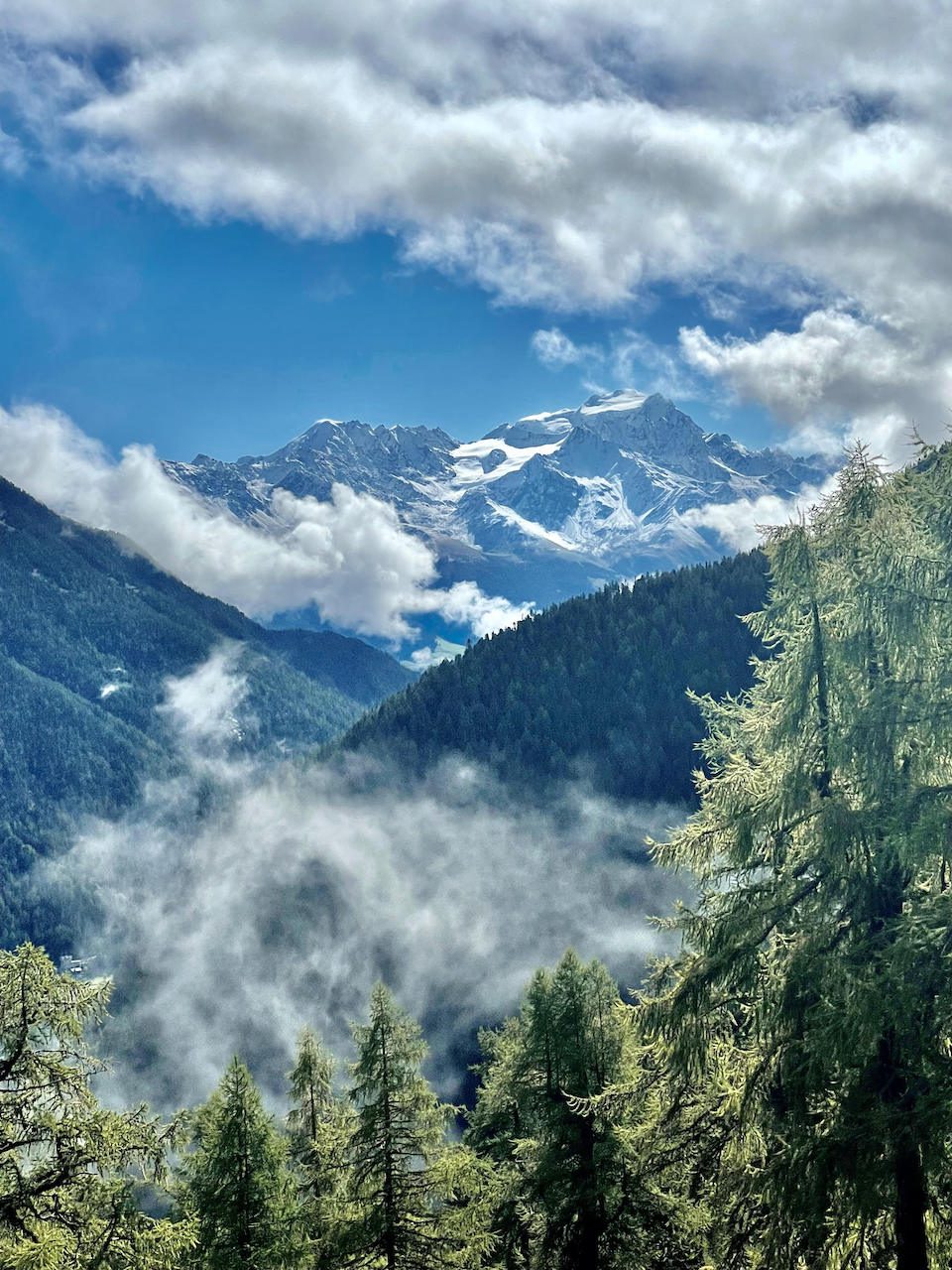
Specs:
- Country: Switzerland
- Distance: ~10 miles / ~16 km
- Total Elevation Gain: ~2,7889ft / ~850m
Stage 8 Overview:
This stage will have you hiking through various terrain, including meadows, forests, and alpine routes. Your challenge of stage eight is to climb the Alp Bovine, where you will get views of the Rhone Valley and the Bernese Alps once at the top. On your descent from Alp Bovine, you will pass the Col de la Forclaz before heading into Trient, during which you will see the beautiful Glacier du Trient.
Stays In Stage 8:
- Hotel Du Col De La Forclaz
- Refuge Le Peuty
- Auberge Mont Blanc
- Le Grande Ourse
Stage #9: Trient To Tre Le Champ
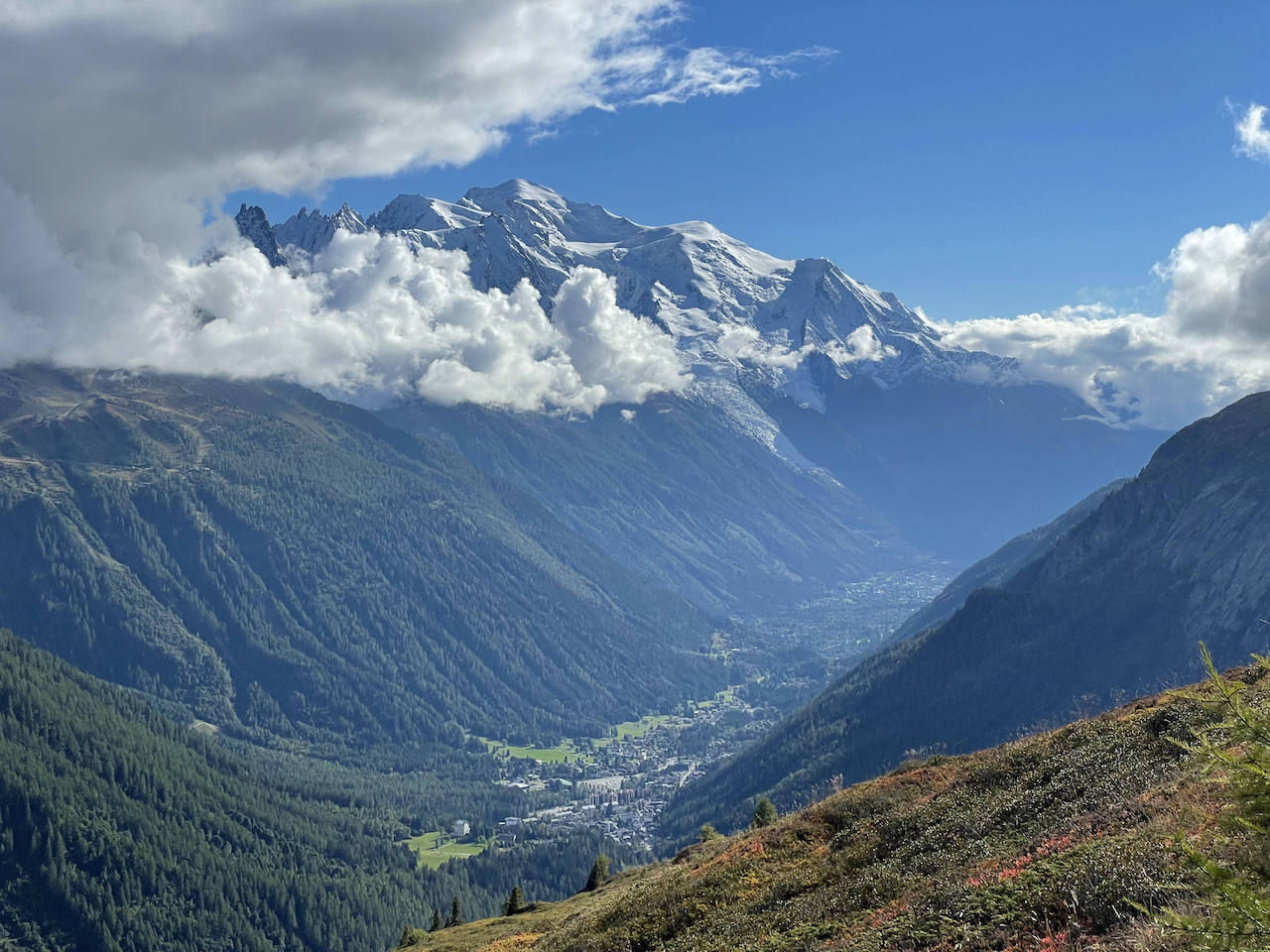
Specs:
- Country: Switzerland ->France
- Distance: ~9 miles / ~14 km
- Total Elevation Gain: ~3,215ft / ~980m
Stage 9 Overview:
As you leave Trient, you almost immediately encounter a climb of the Col de Balme. Once at the top, Mont Blanc reappears into view, and you cross back into France all at once. At the top of Col de Balme, there is a refuge Refuge du Col de Balme where you can stop for a refreshment or snack, and enjoy the view.
After passing Col de Balme, you will hike to Aiguillette des Posettes enjoying panoramic views of Mont Blanc and the Chamonix Valley the entire way. A steep descent into the forest follows your arrival at the summit of Aiguillette des Posettes until you reach Tre Le Champ.
Stays In Stage 9:
Stage #10: Tre Le Champ To Refuge la Flegere
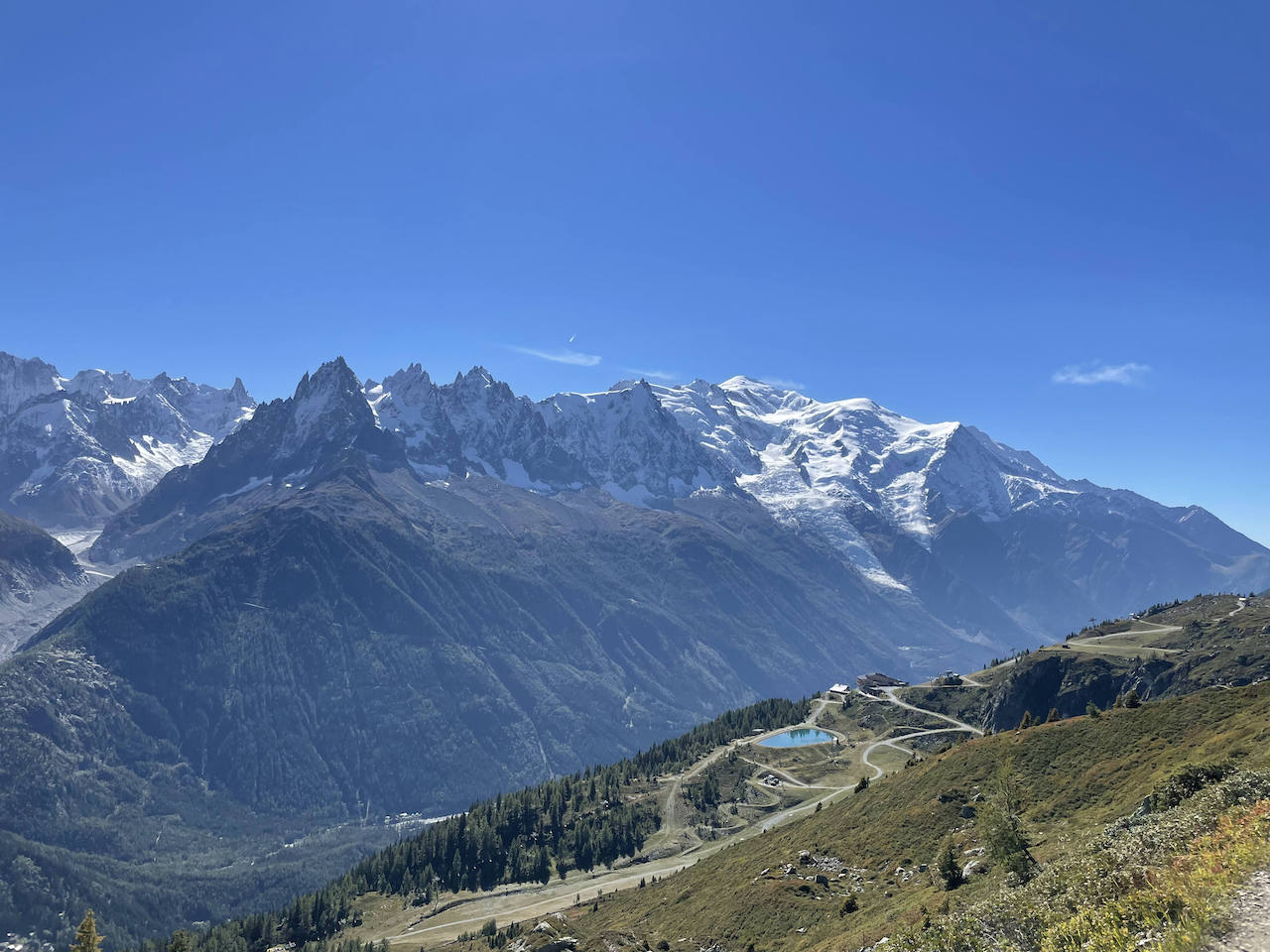
Specs:
- Country: France
- Distance: ~5 miles / ~8 km
- Total Elevation Gain: ~2,395ft / ~730m
Stage 10 Overview:
Personally, one of my favorite stages of the TMB, stage ten, has a steep climb of Tete aux Vents requiring metal ladders, rungs, and platforms to get you to the top. While these features might make those with a fear of heights uncomfortable, the view of the Grand Balson Sud when at the top is more than worth it. As you hike to La Flegere, you will enjoy a breathtaking panoramic view of the Mont Blanc mountain range.
Stays In Stage 10:
- Refuge la Flegere
- Refuge Du Lac Blanc ***Located on alternate route***
Stage #11: Refuge La Flegere To Les Houches
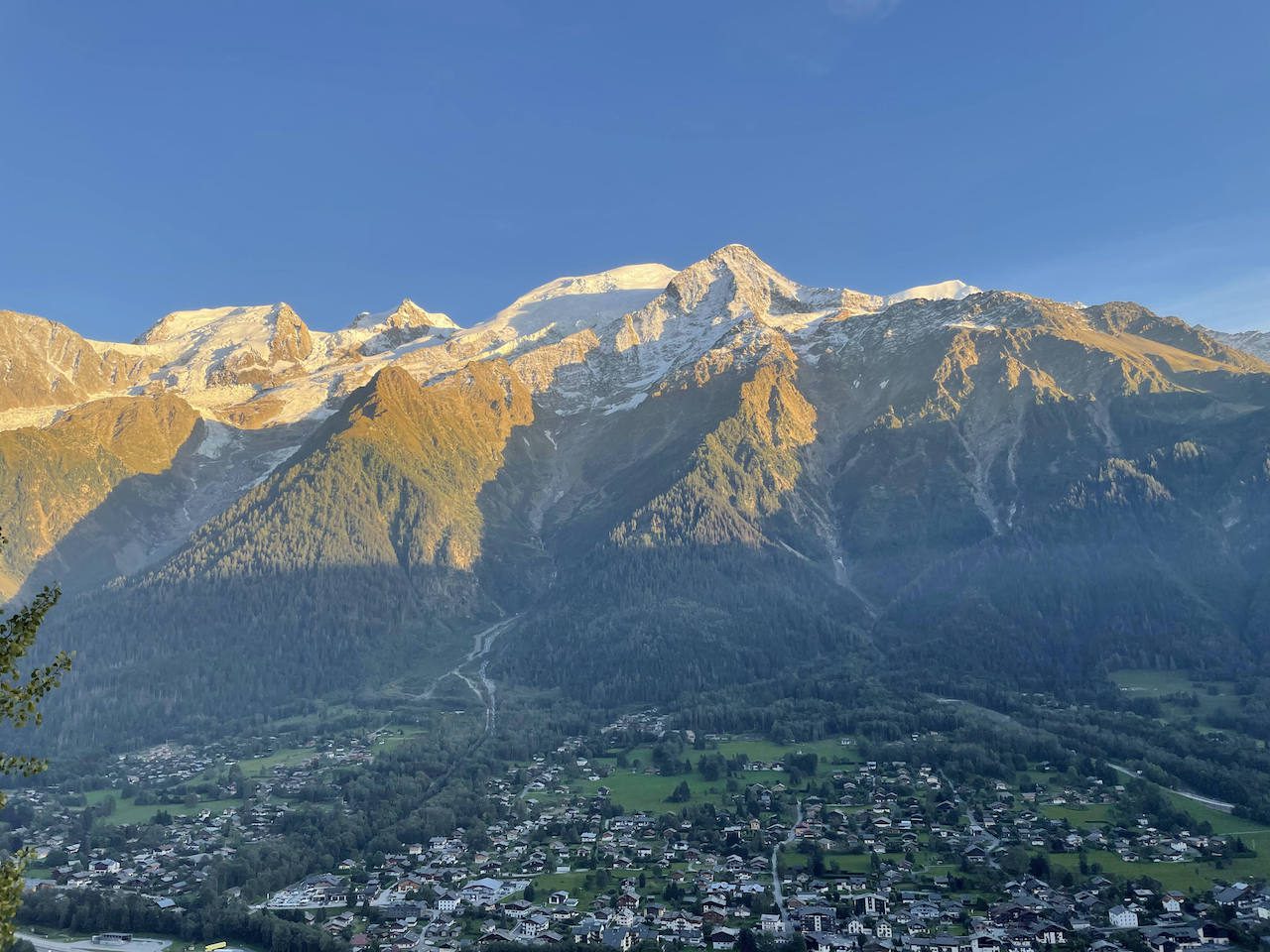
Specs:
- Country: France
- Distance: ~11.5 miles / ~18.5 km
- Total Elevation Gain: ~2,953ft / ~900m
Stage 11 Overview
With its many cable cars and bulldozed areas of soil, the ski industry has tarnished at the beginning of this stage. However, as you climb the Col du Brevent, this will all be forgotten as you will encounter views of the Diosaz Valley, Mont Blanc, and Chamonix. After reaching the summit of Col du Brevent, you will have a downhill hill that will put a number on your knees until reaching Les Houches. While your knees will be hurting, you will still be able to enjoy incredible alpine views of your descent. Congrats you just completed to Tour Du Mont Blanc!

